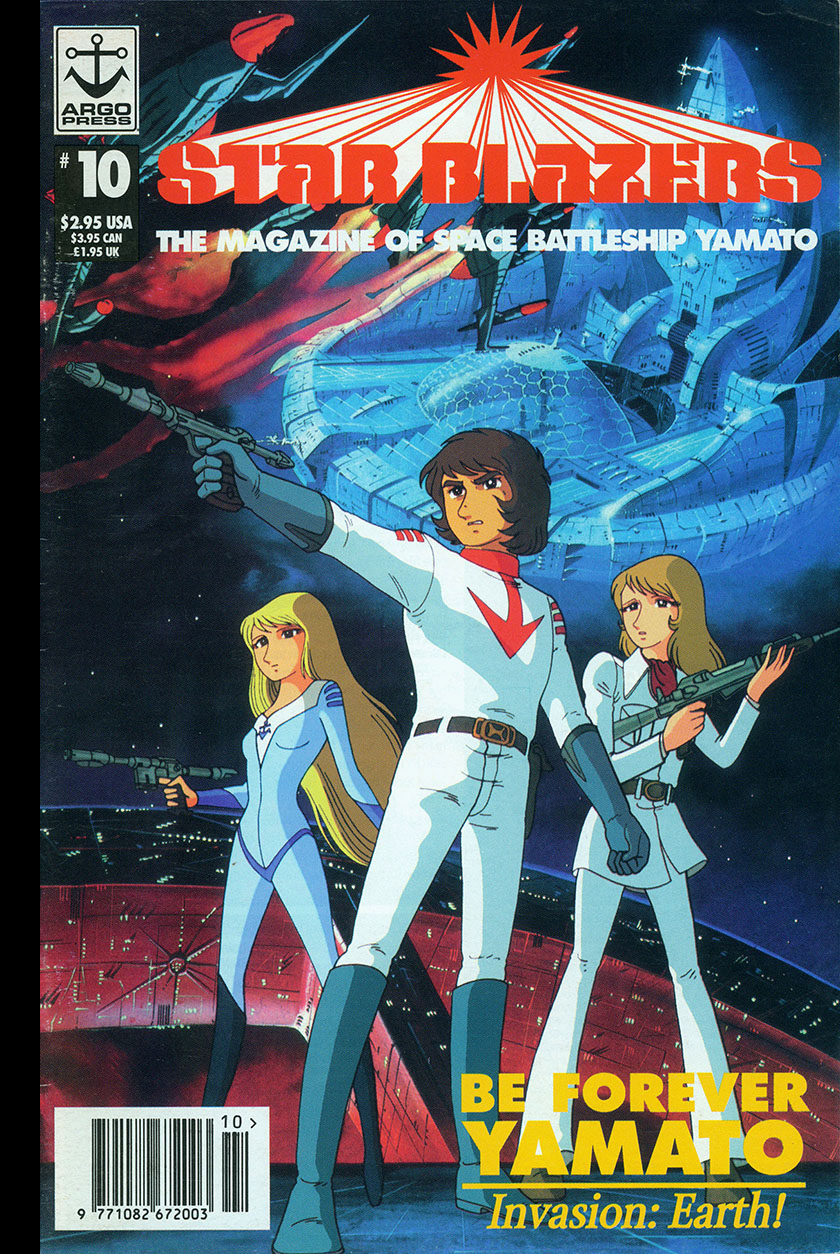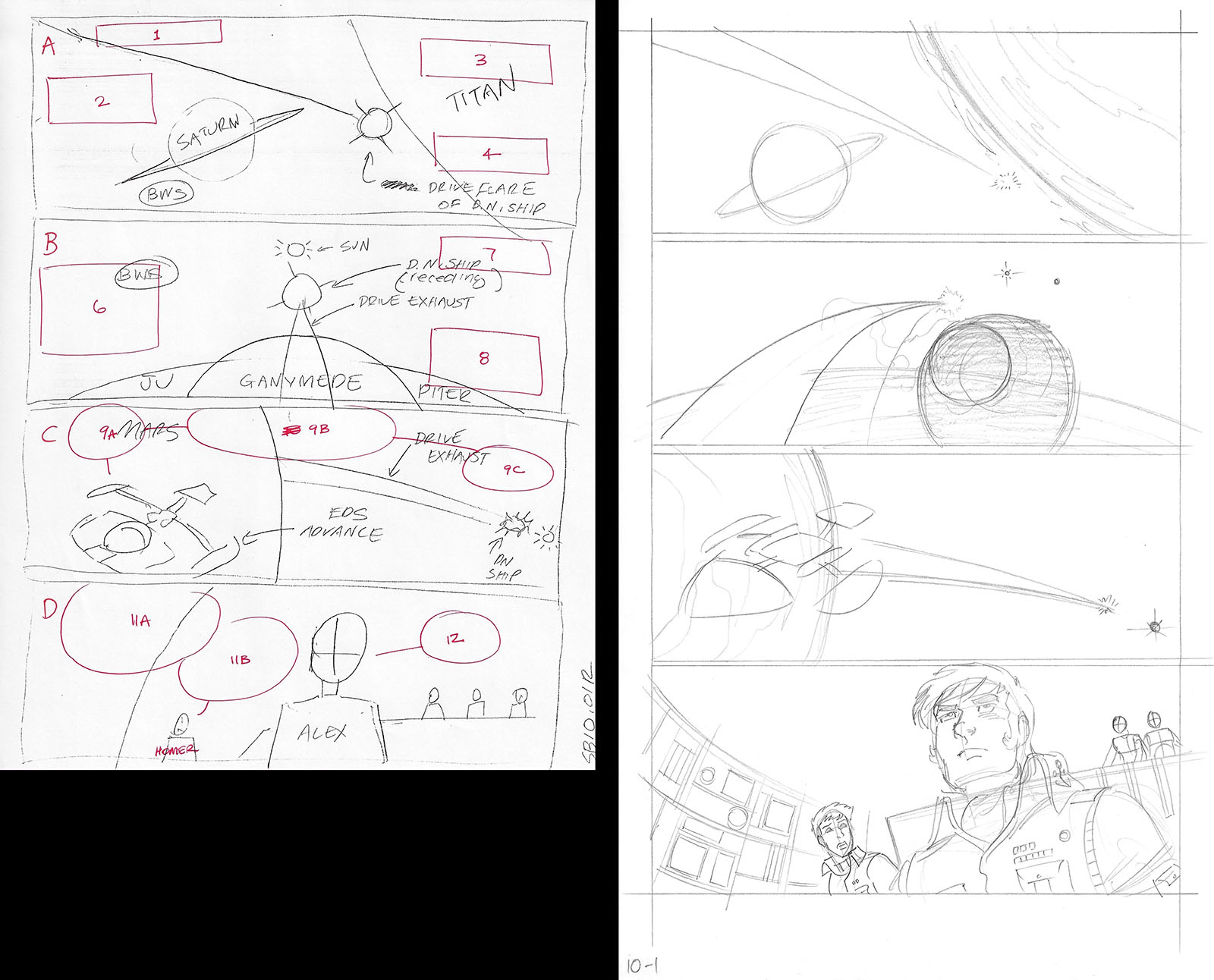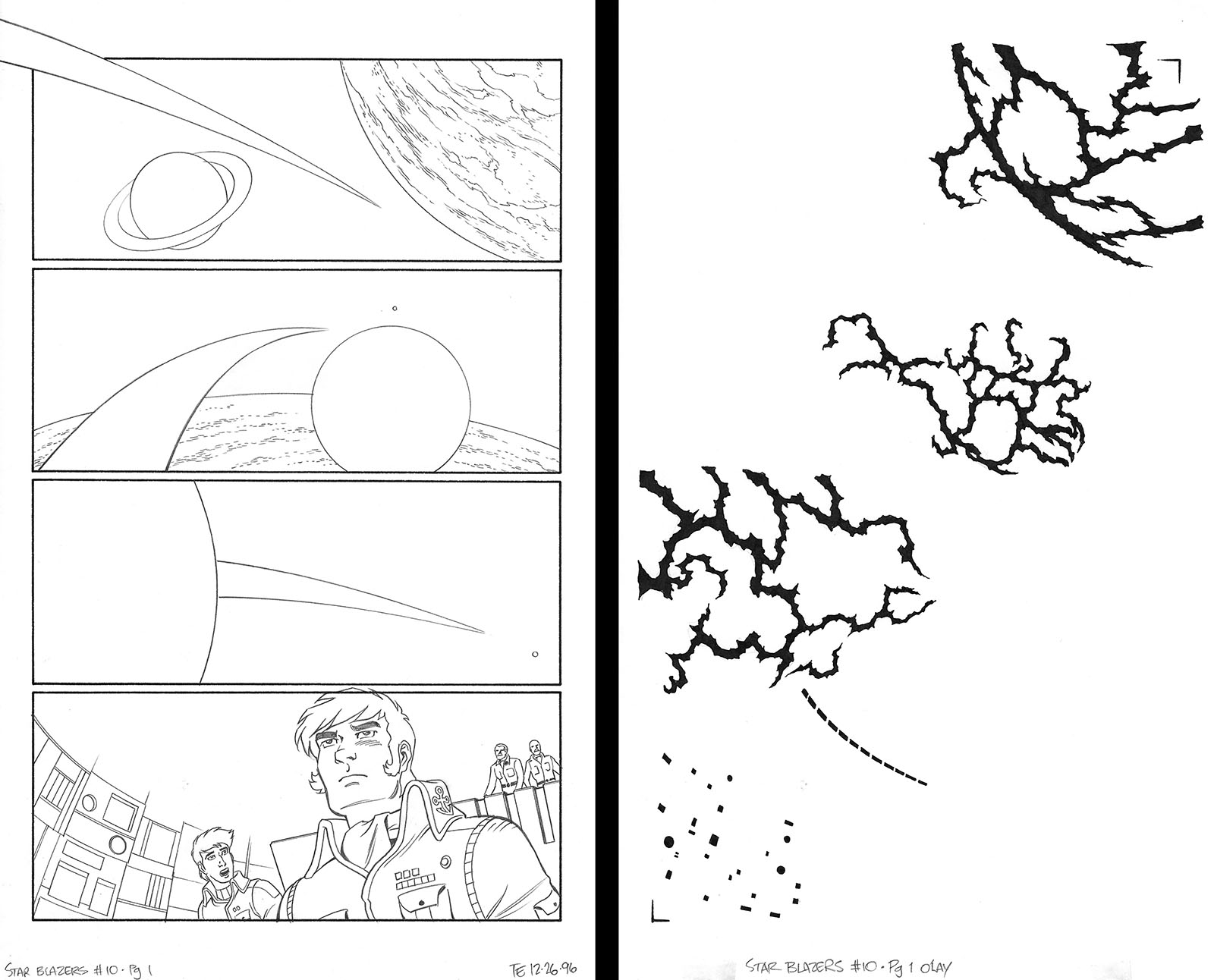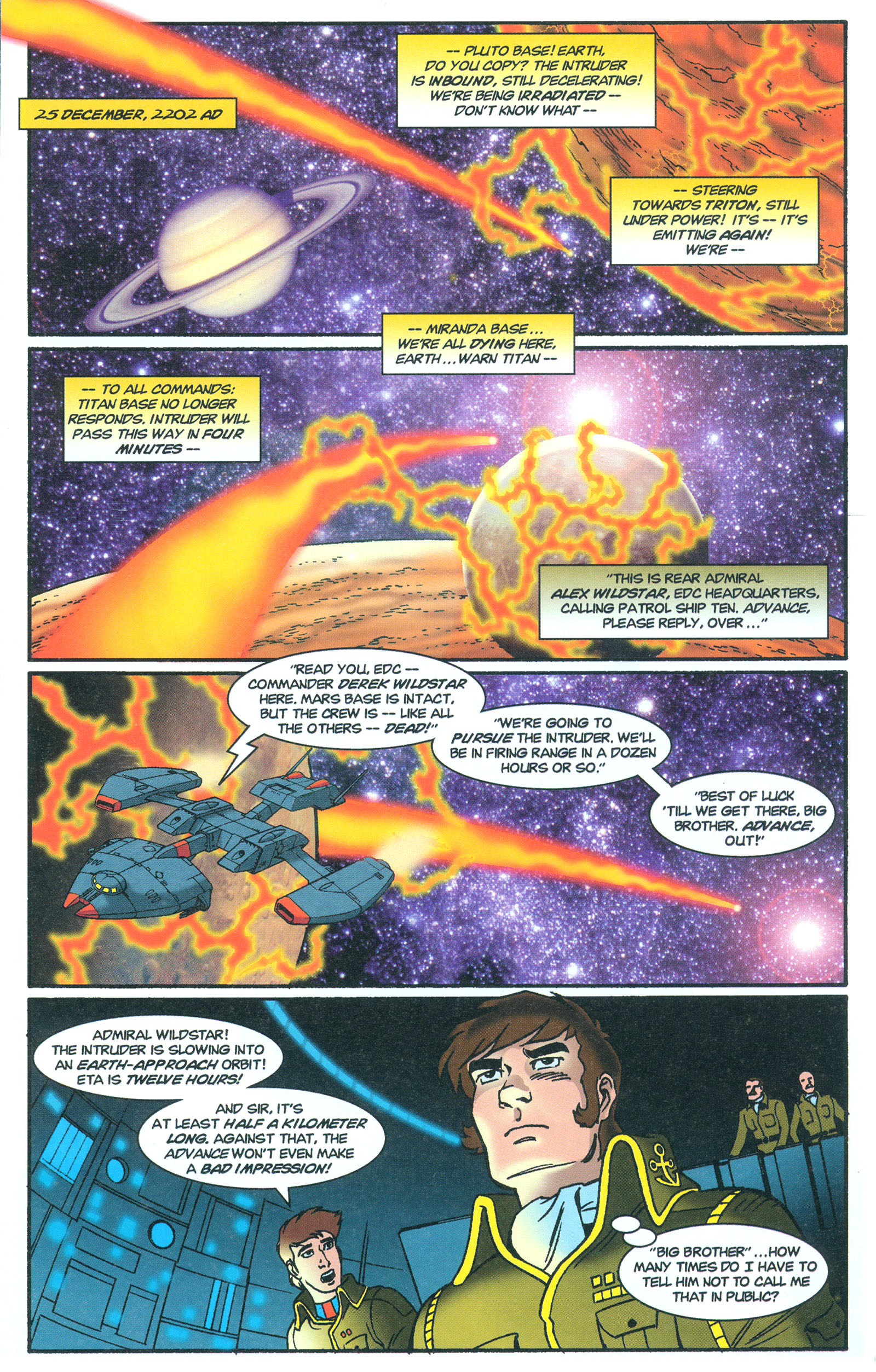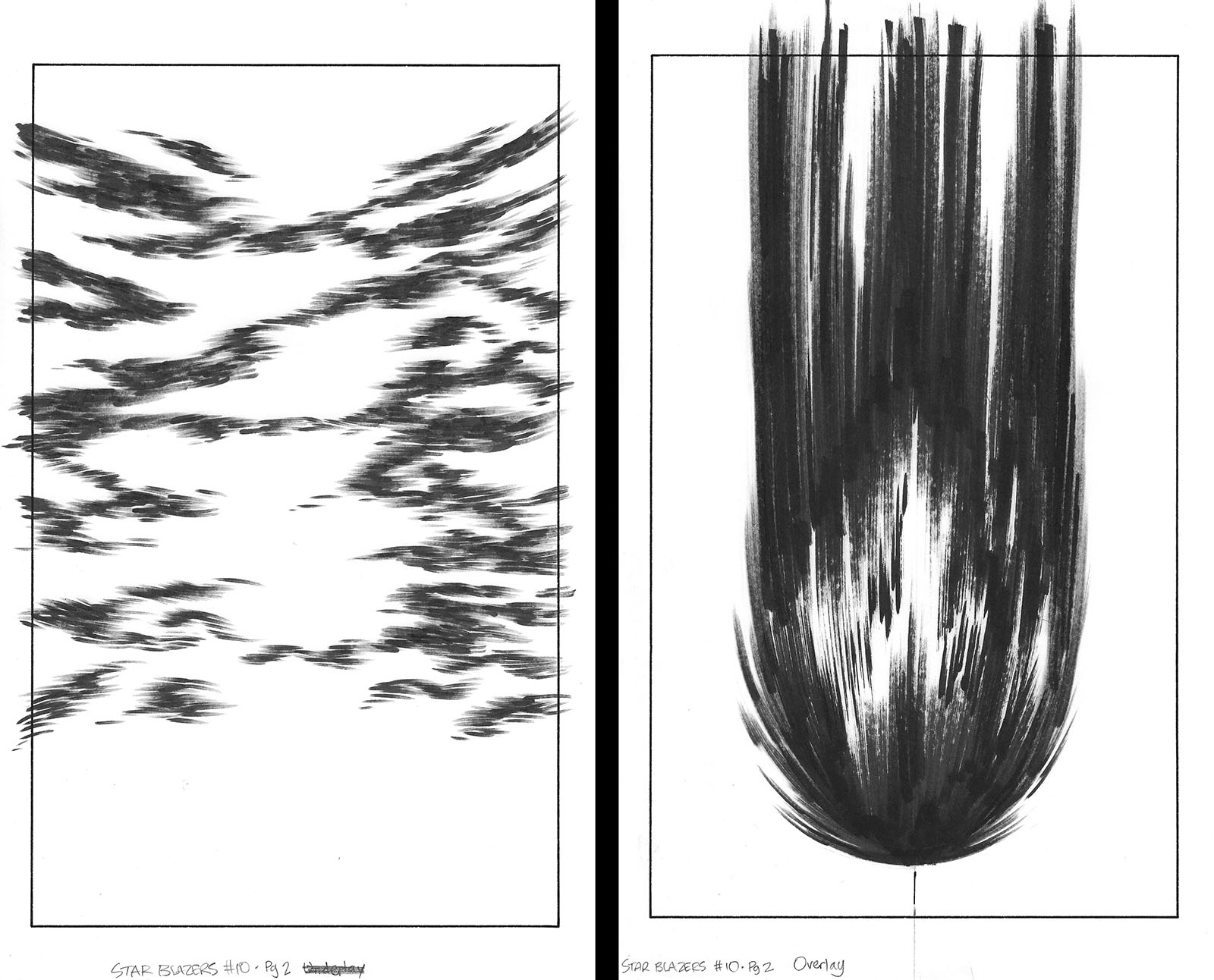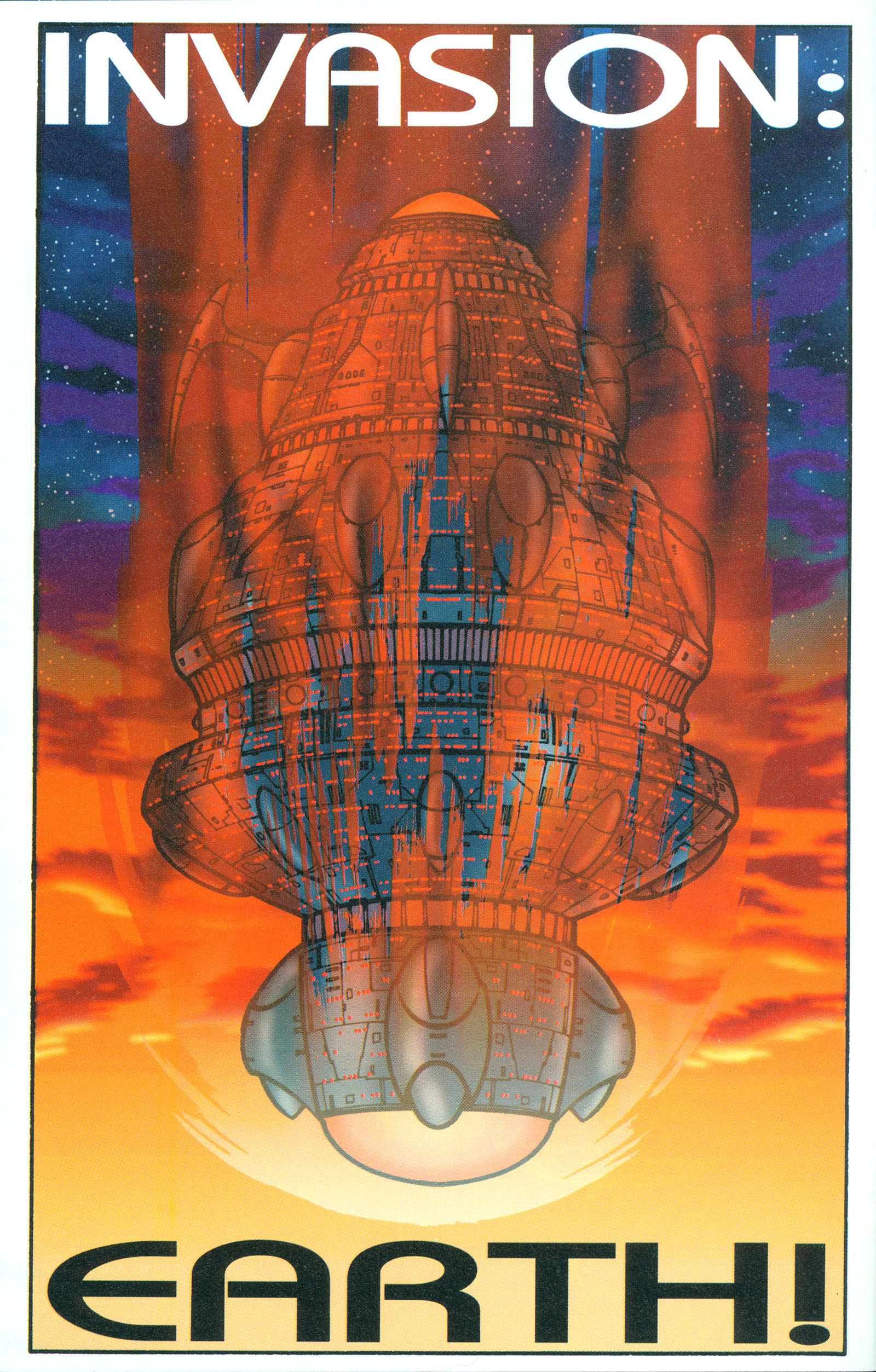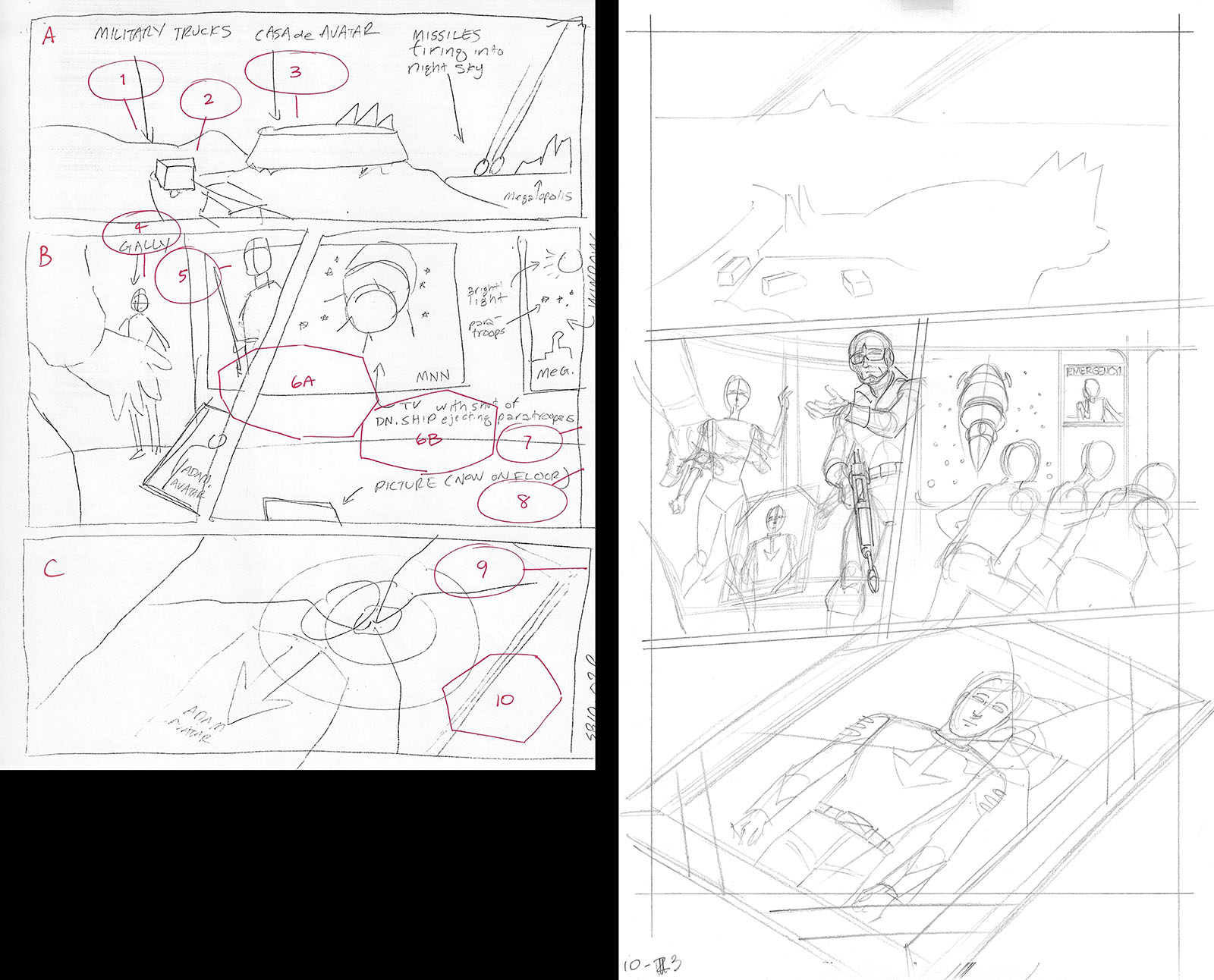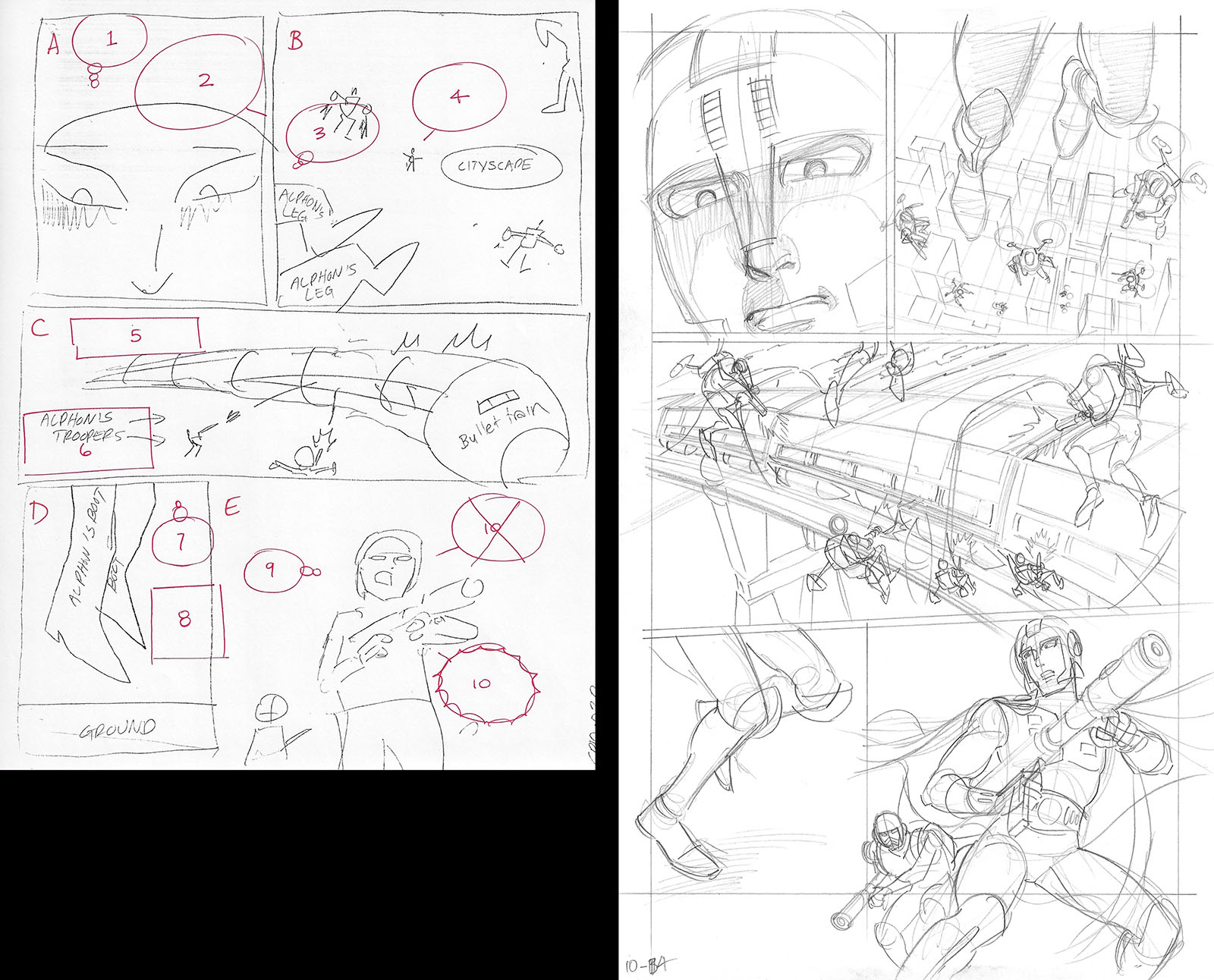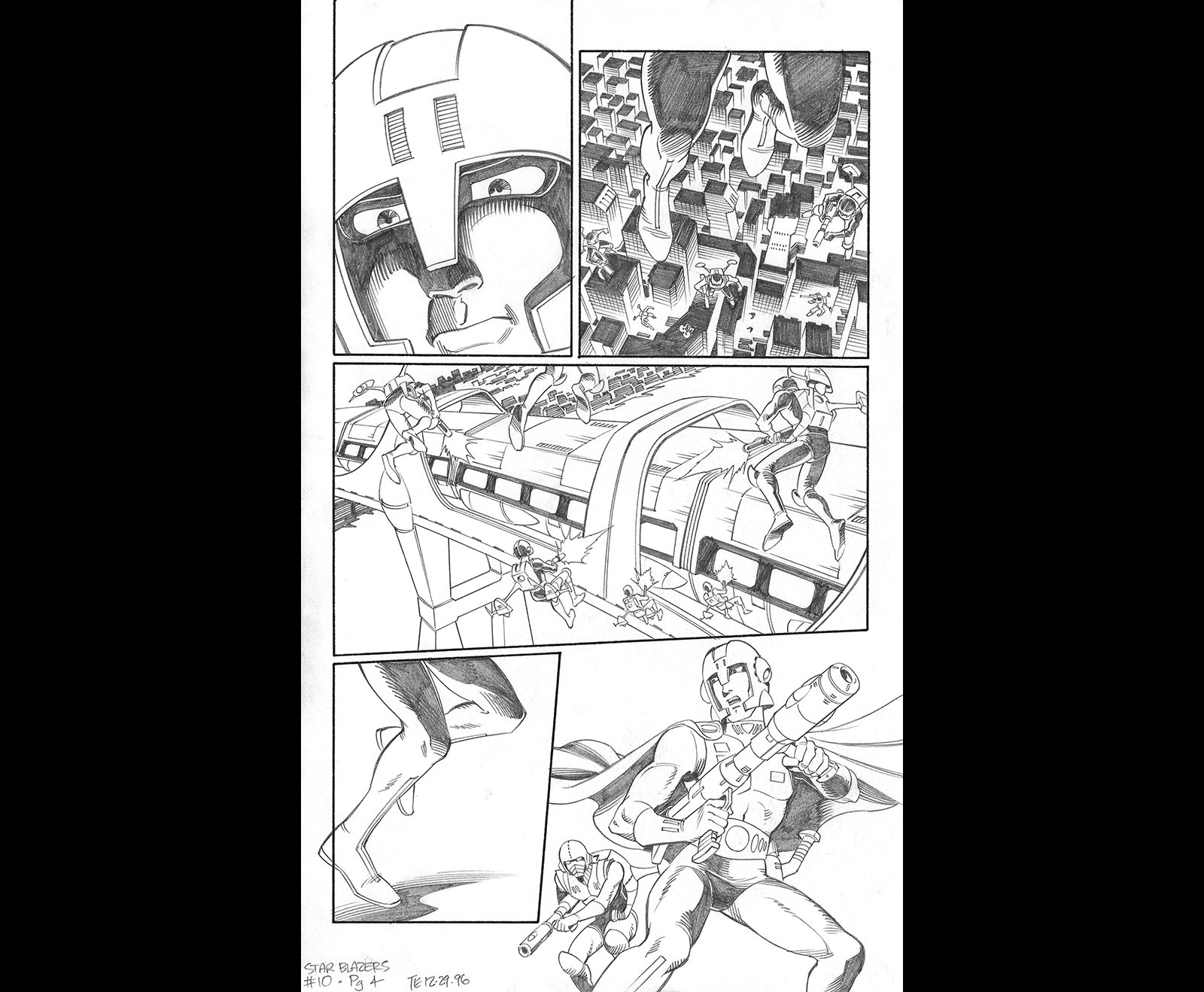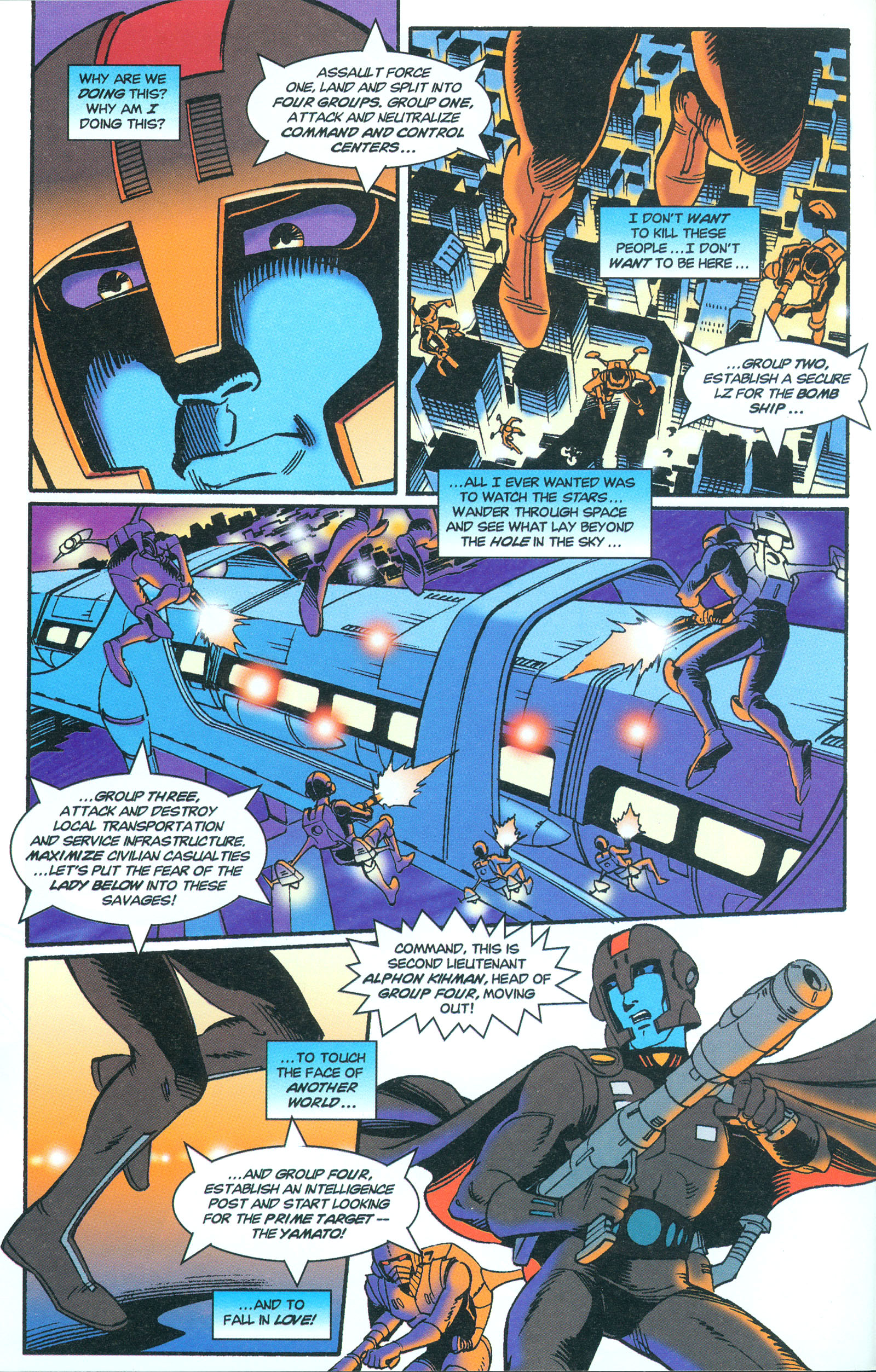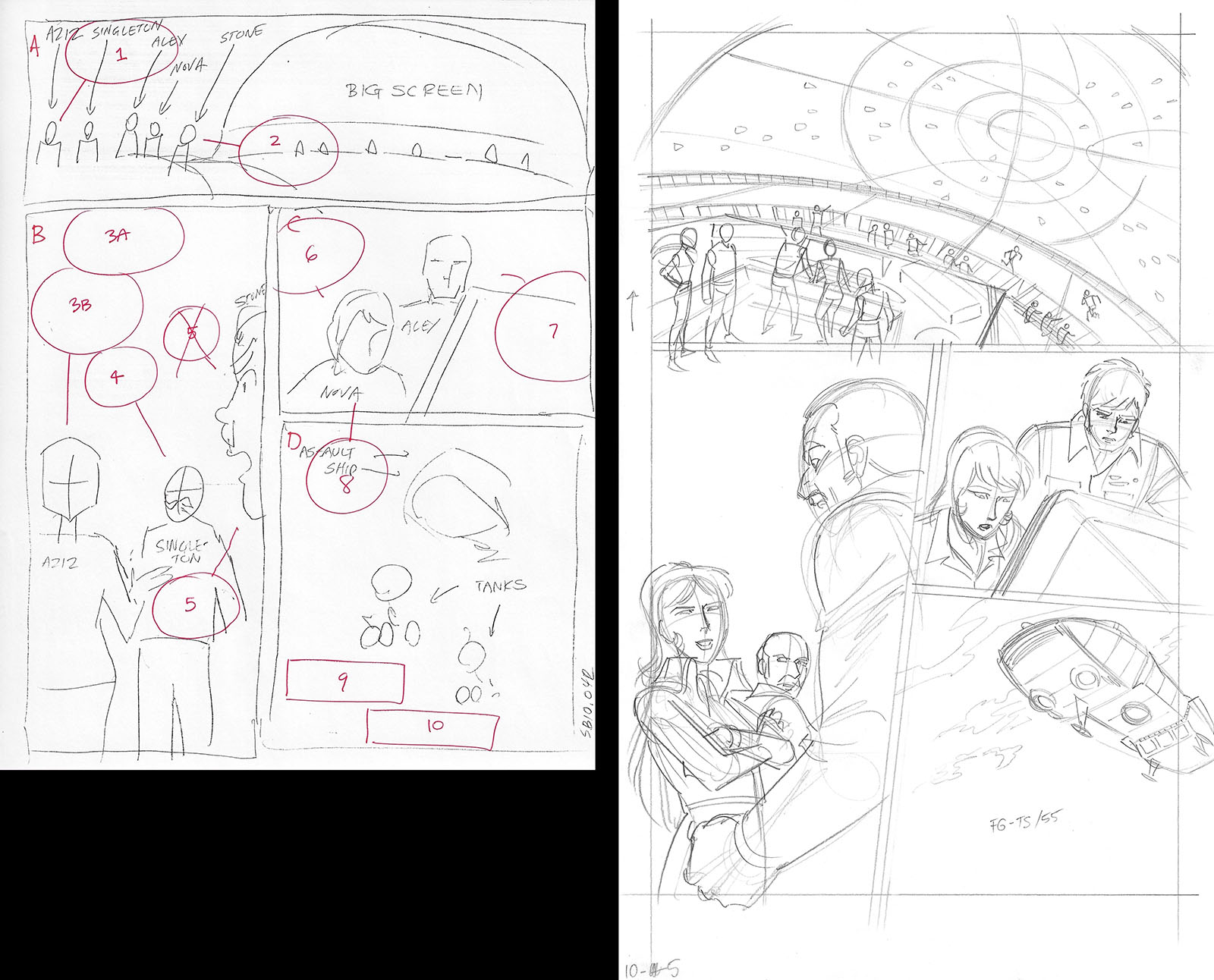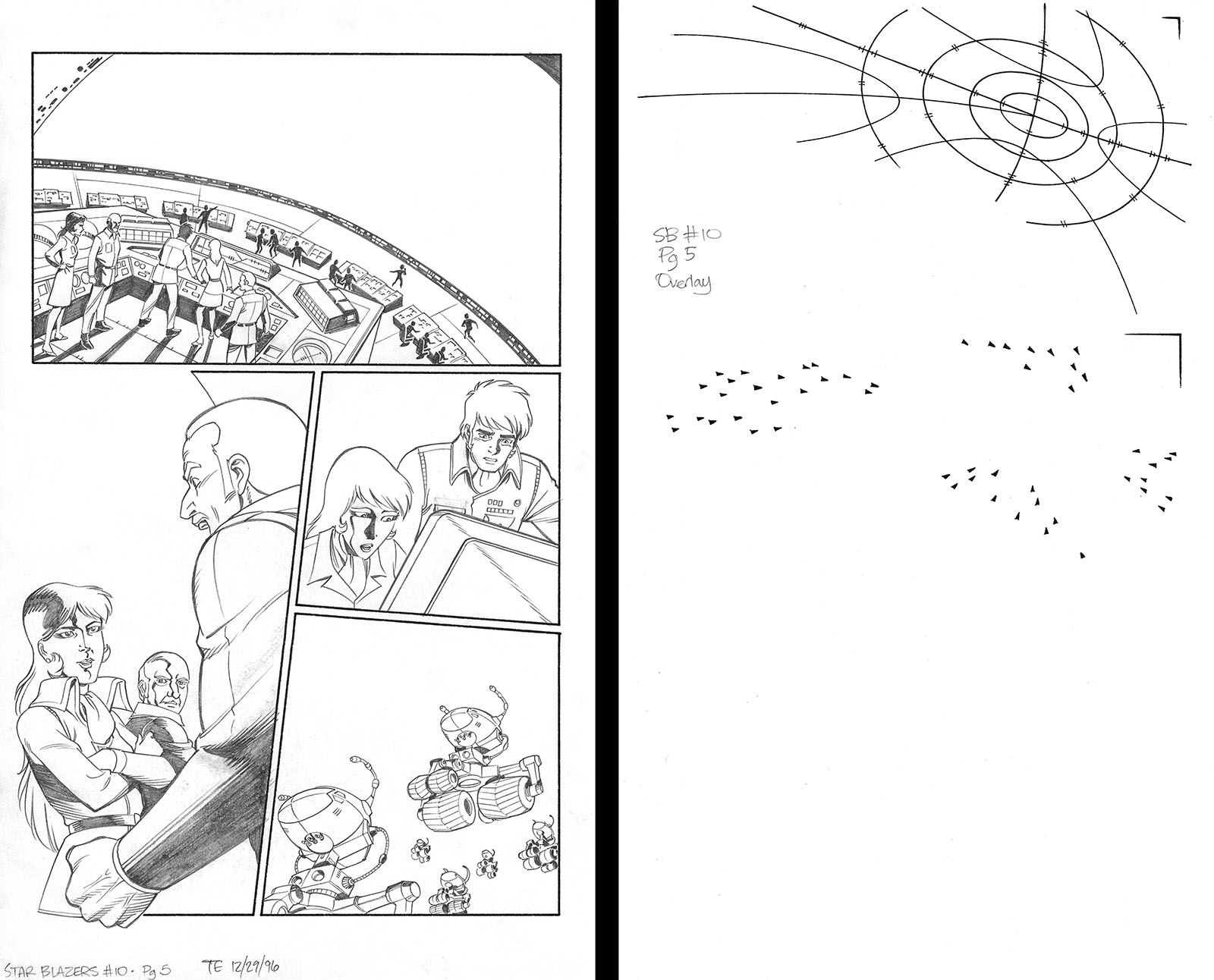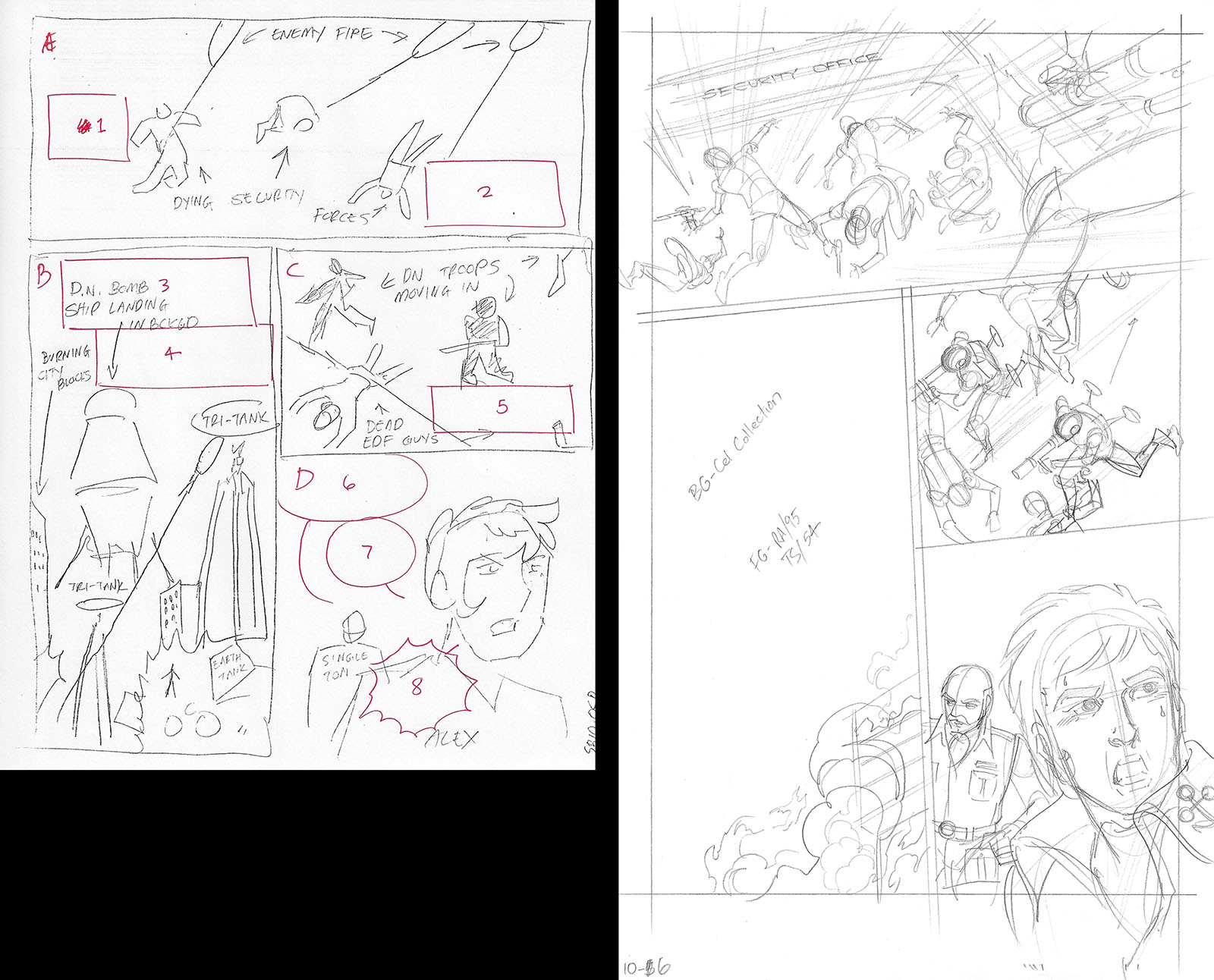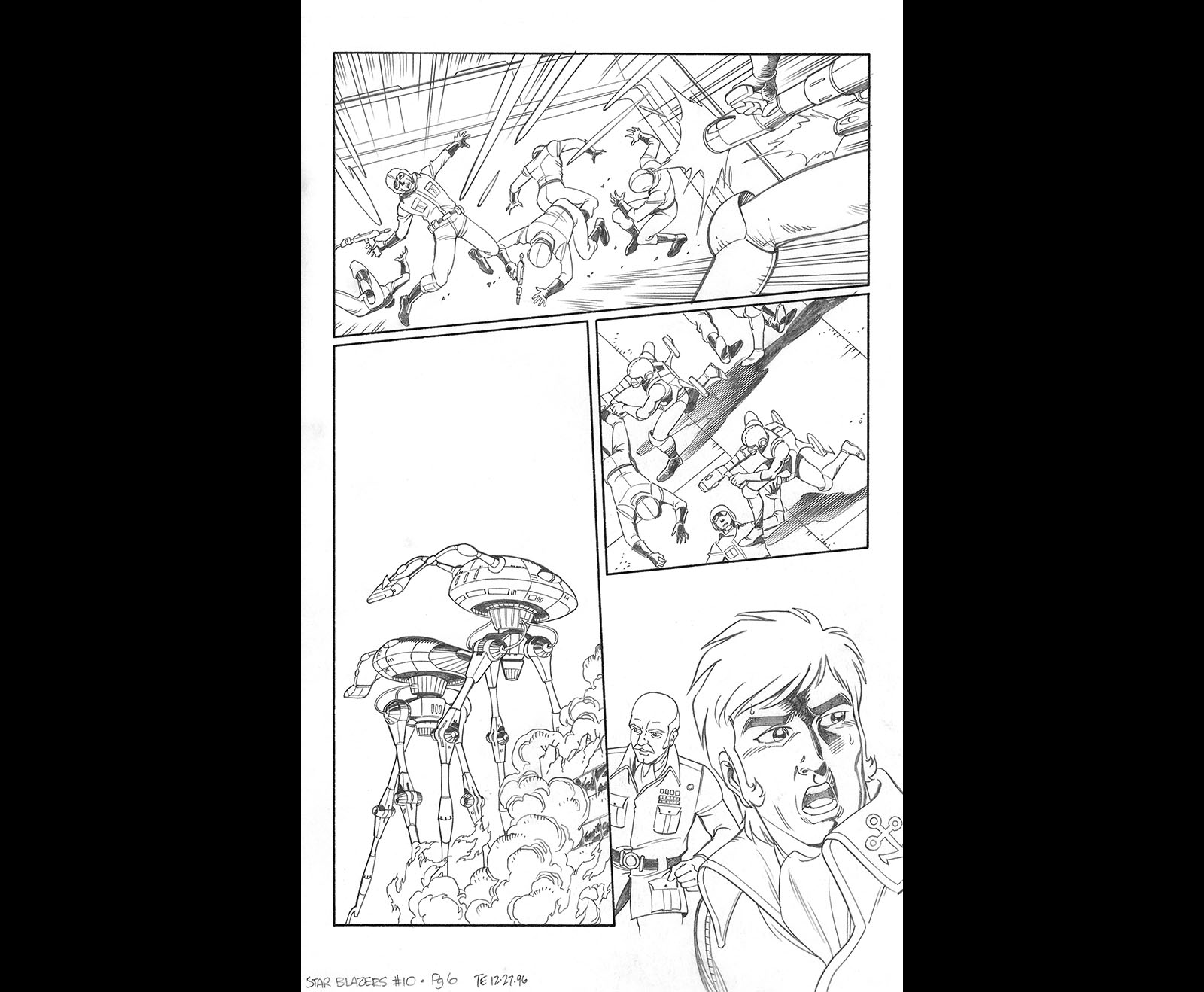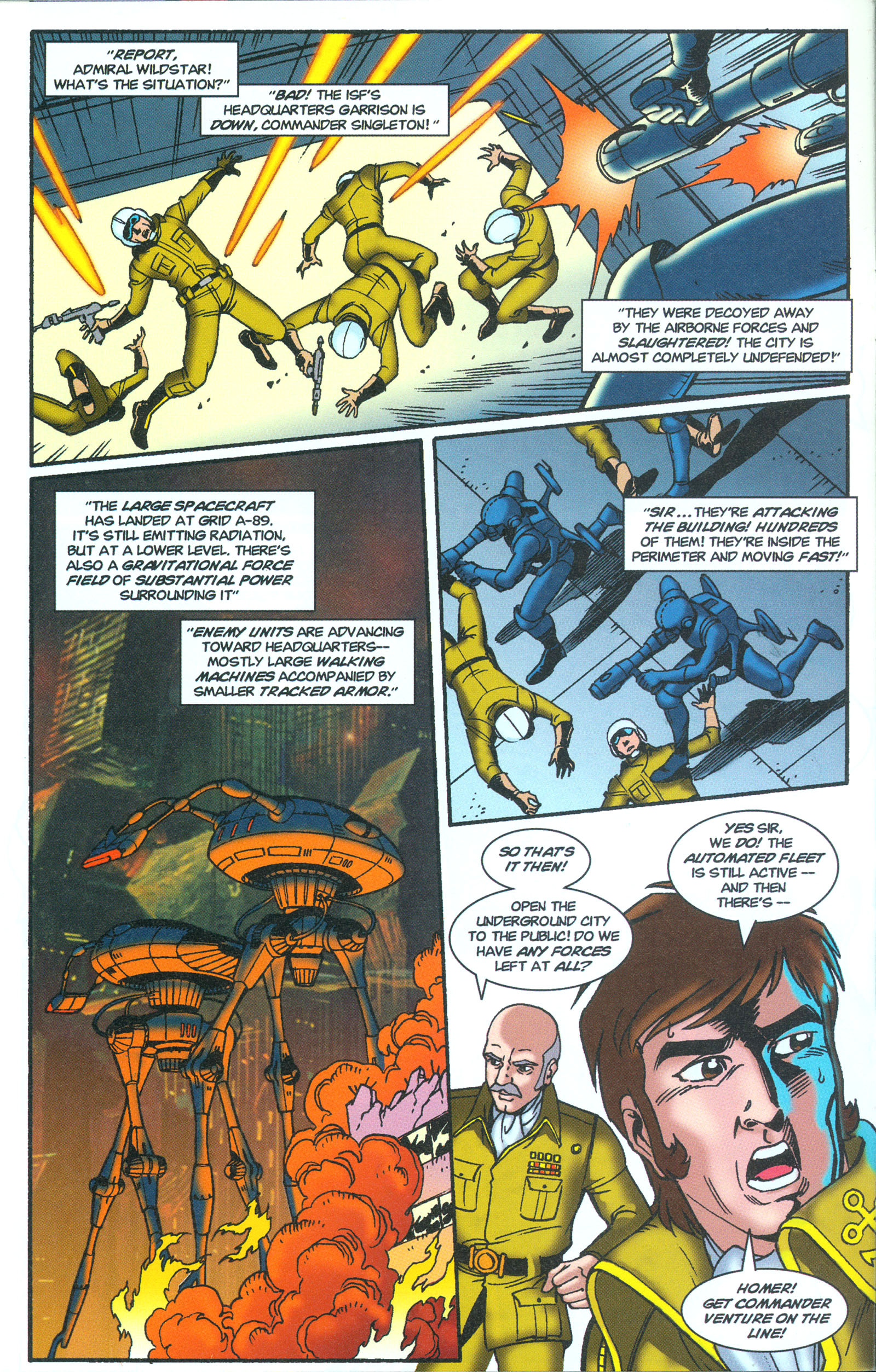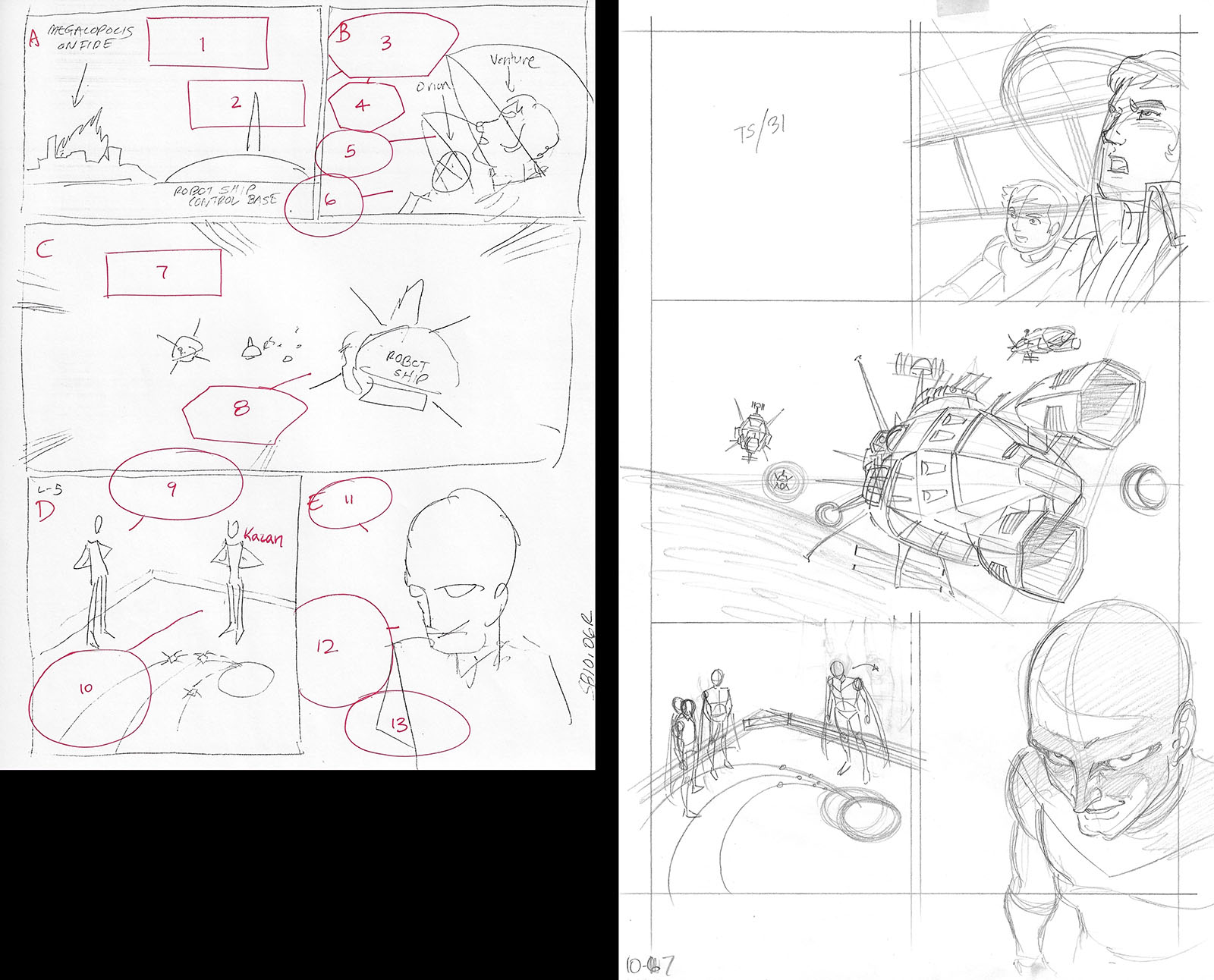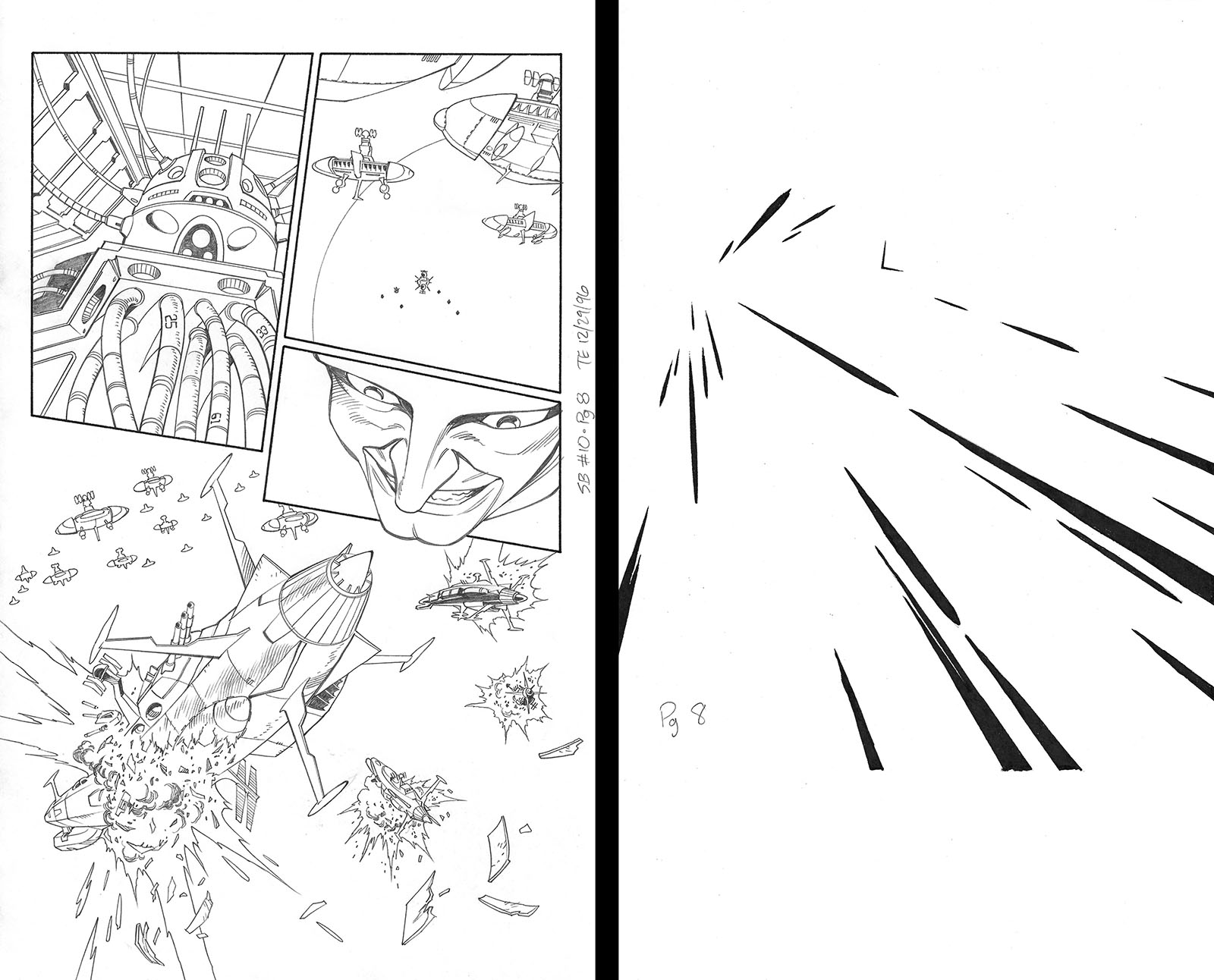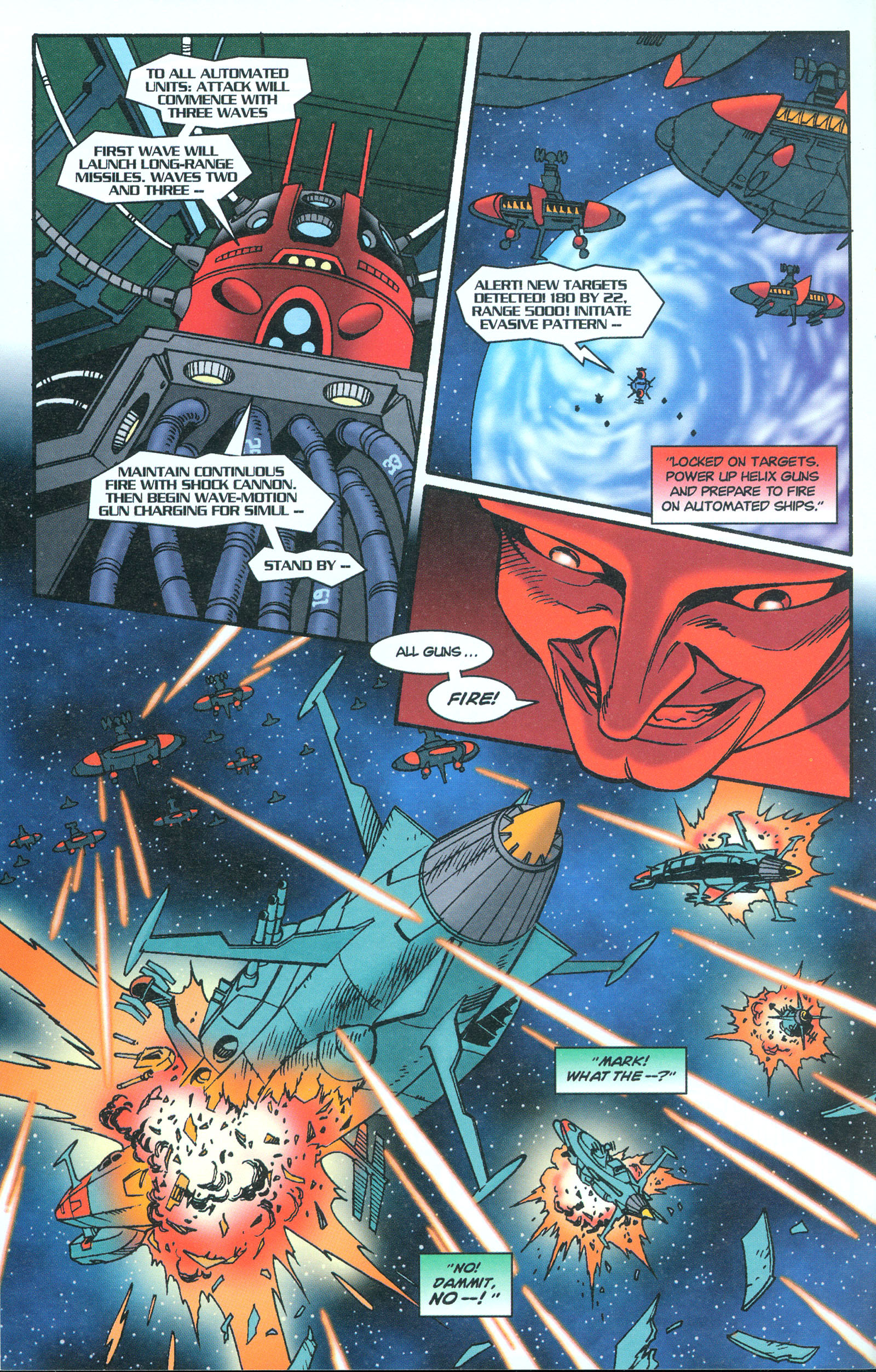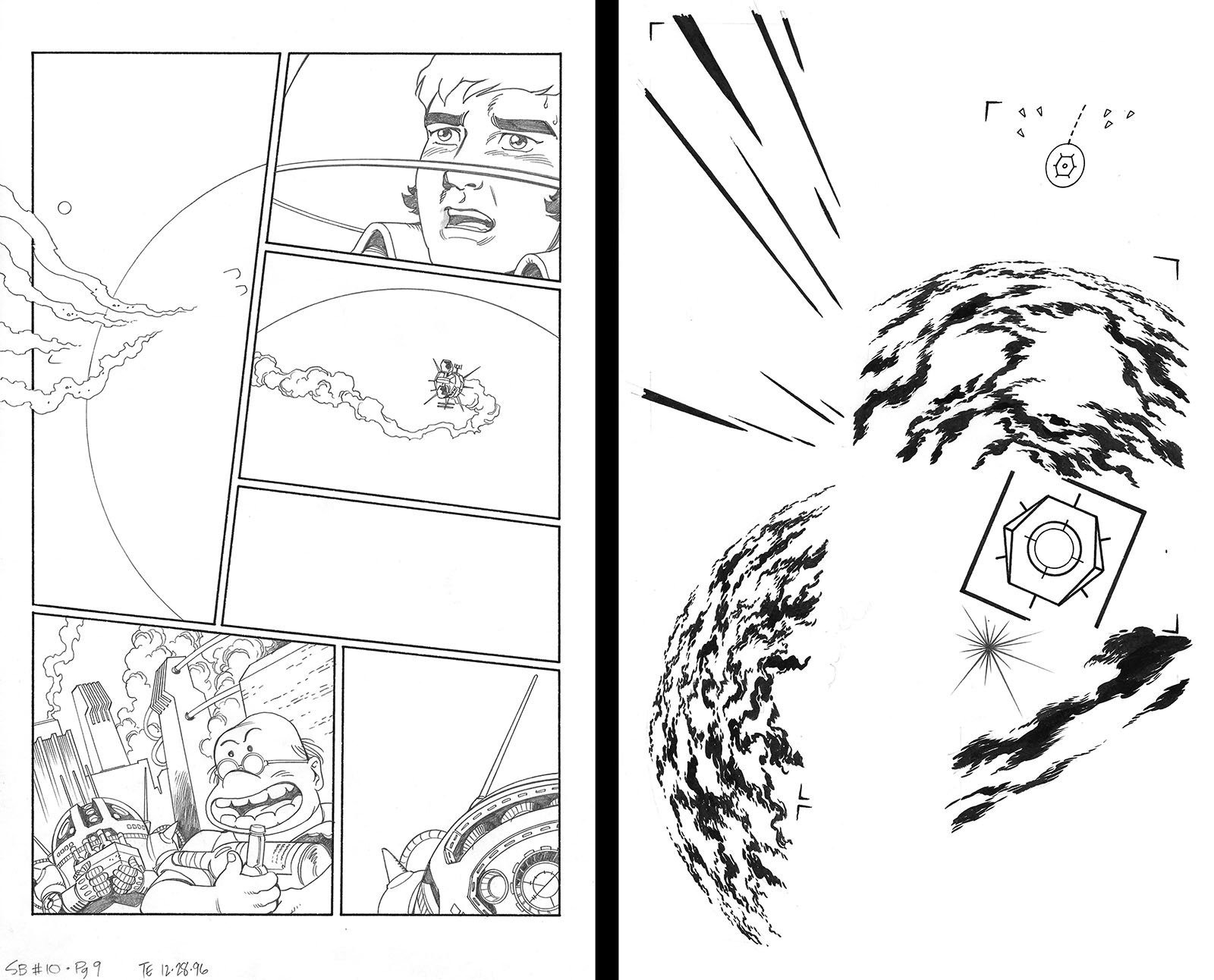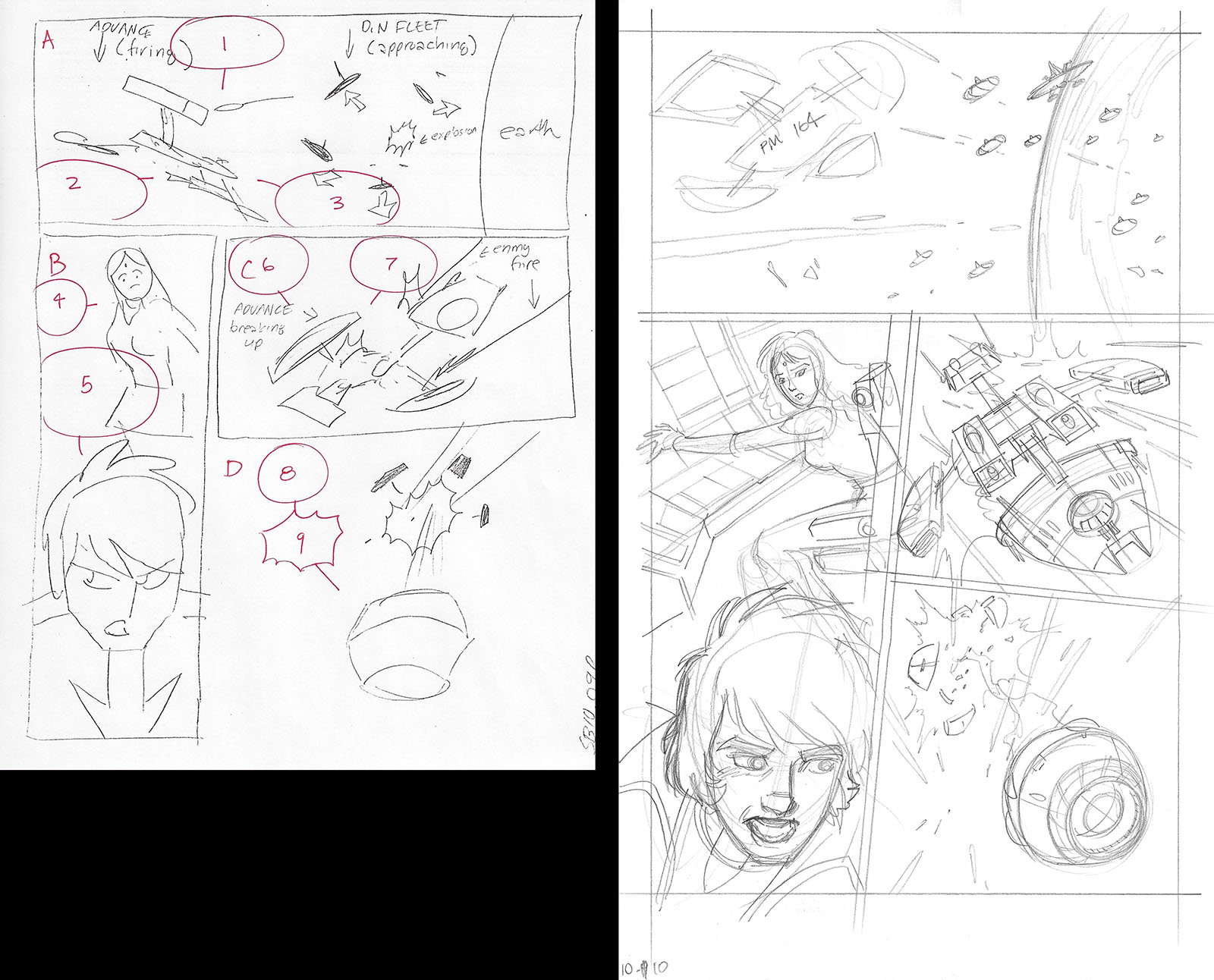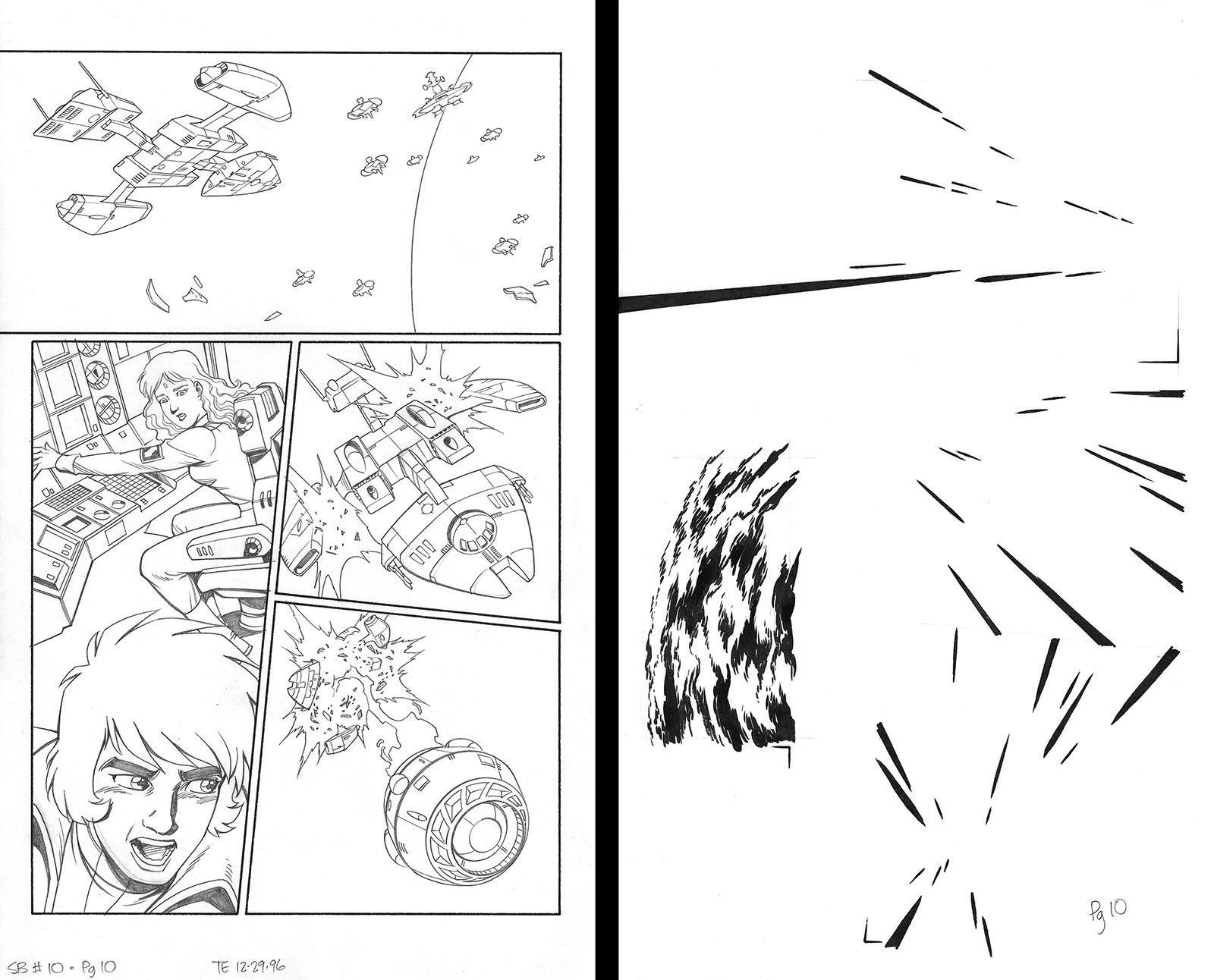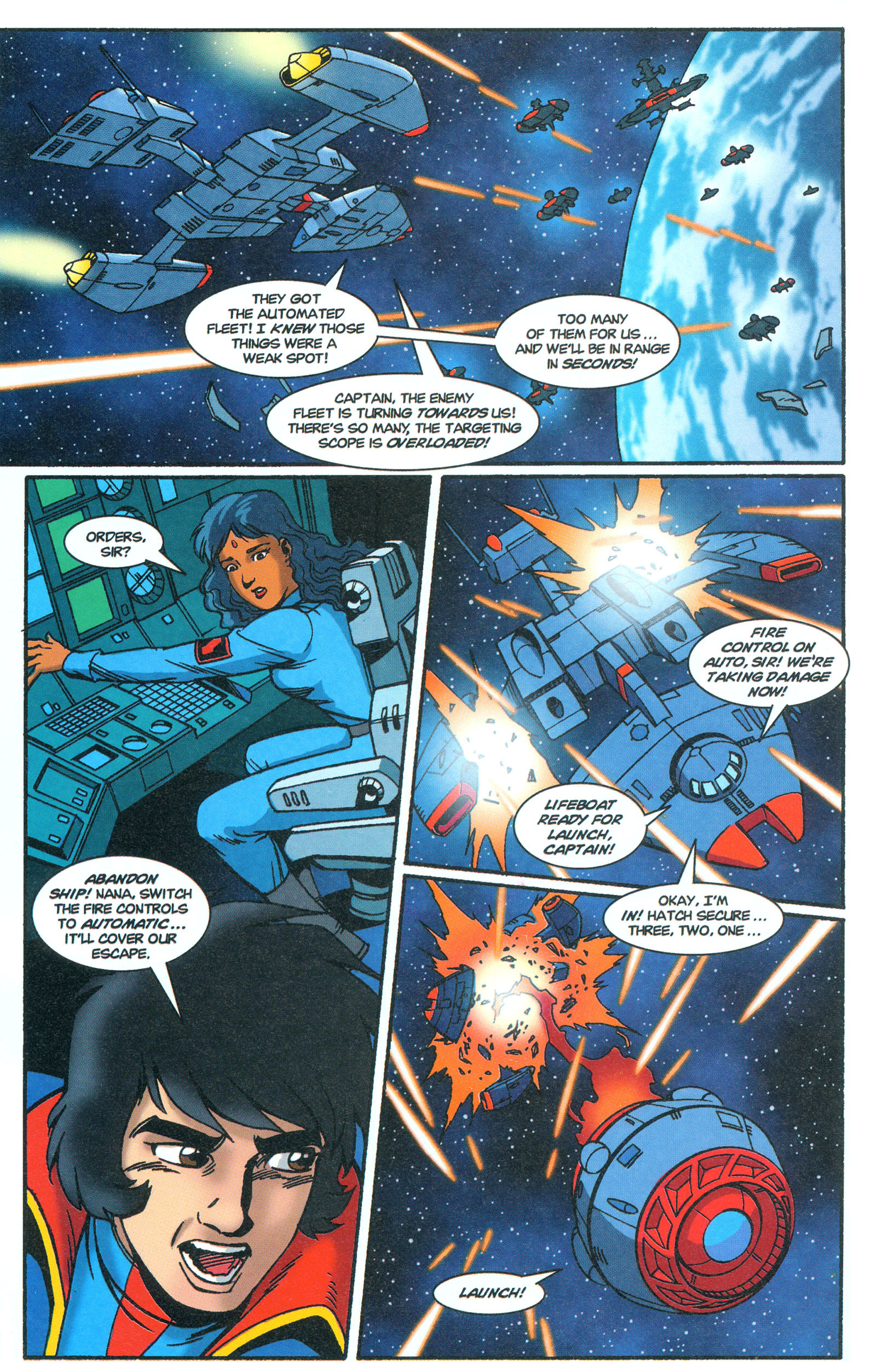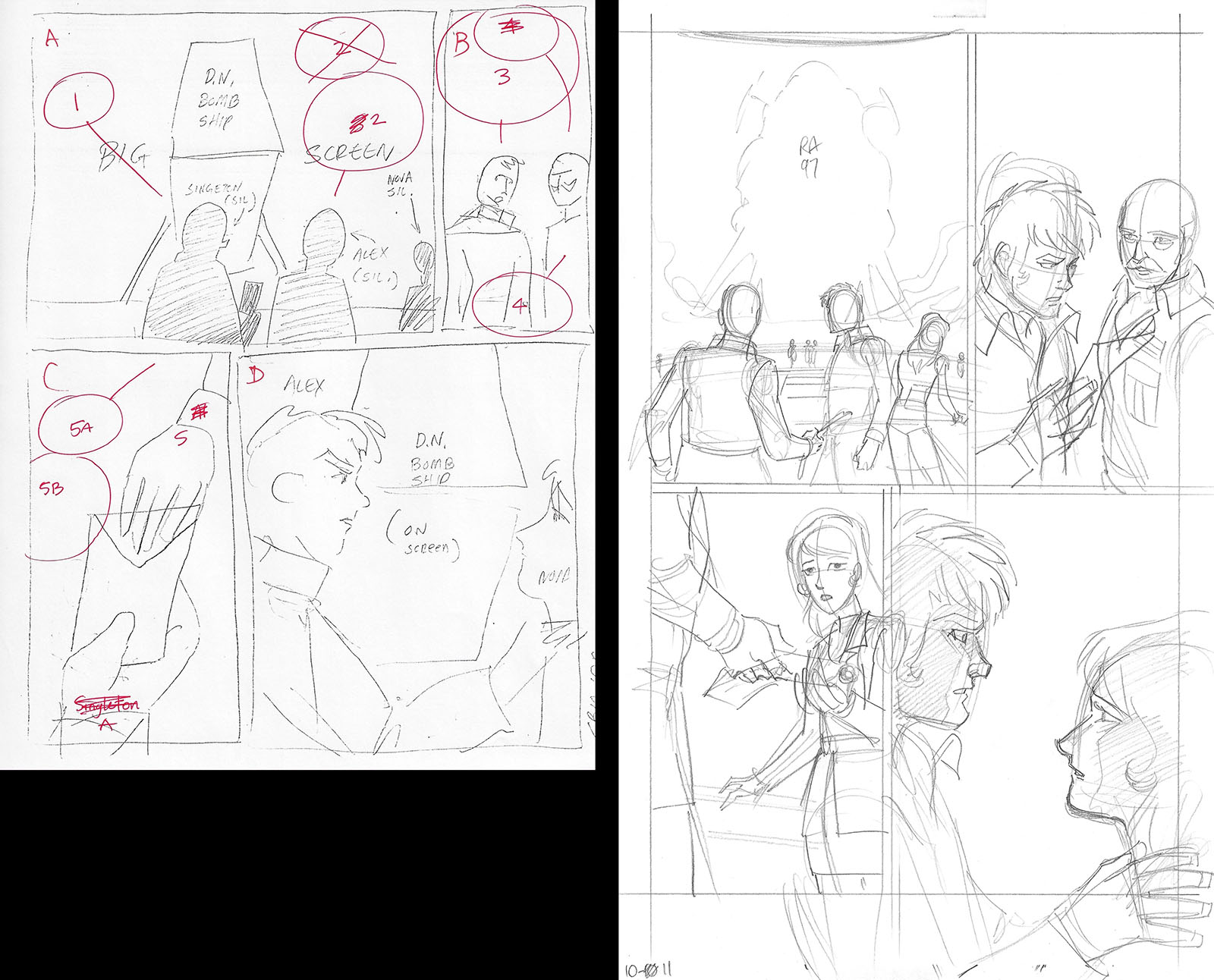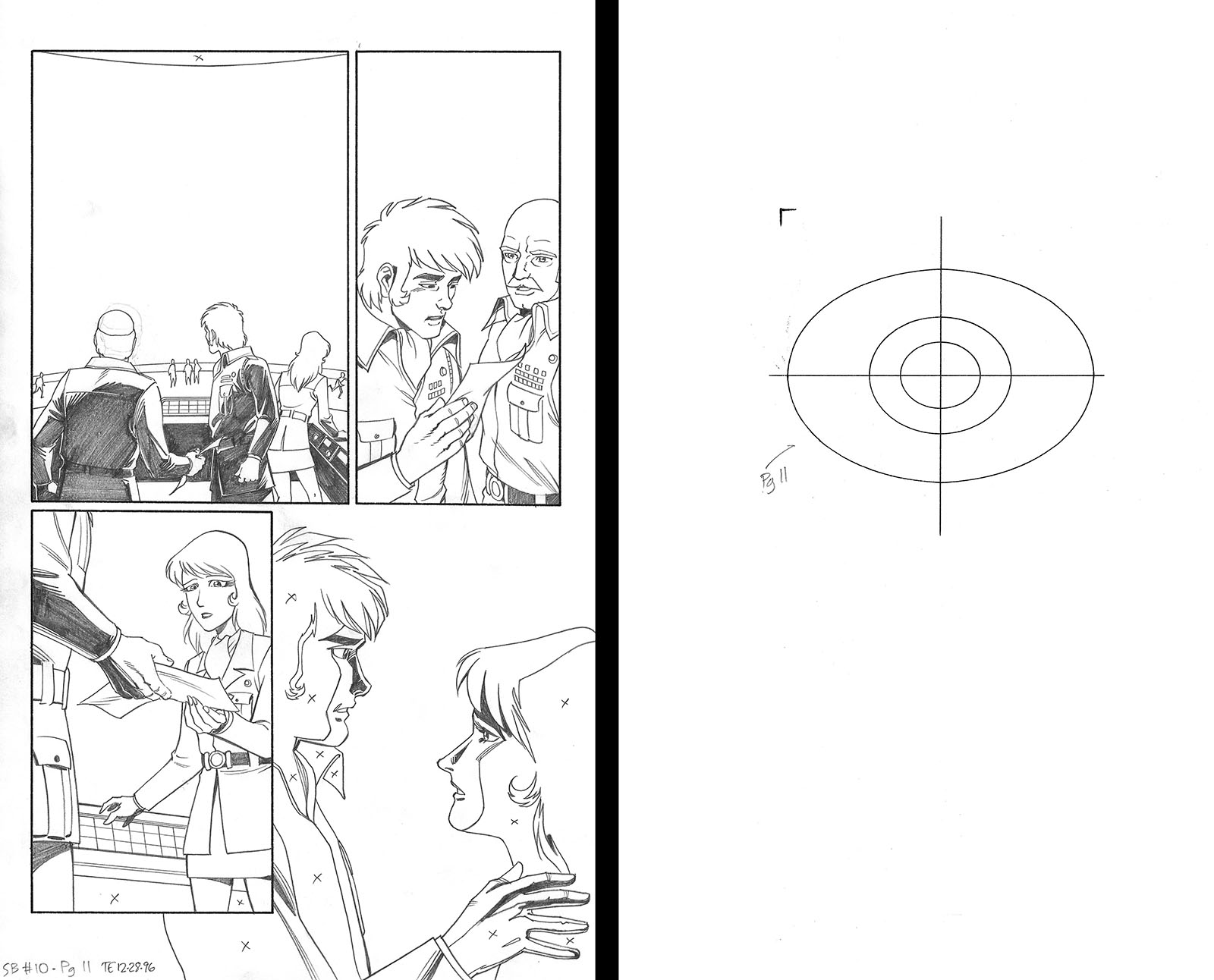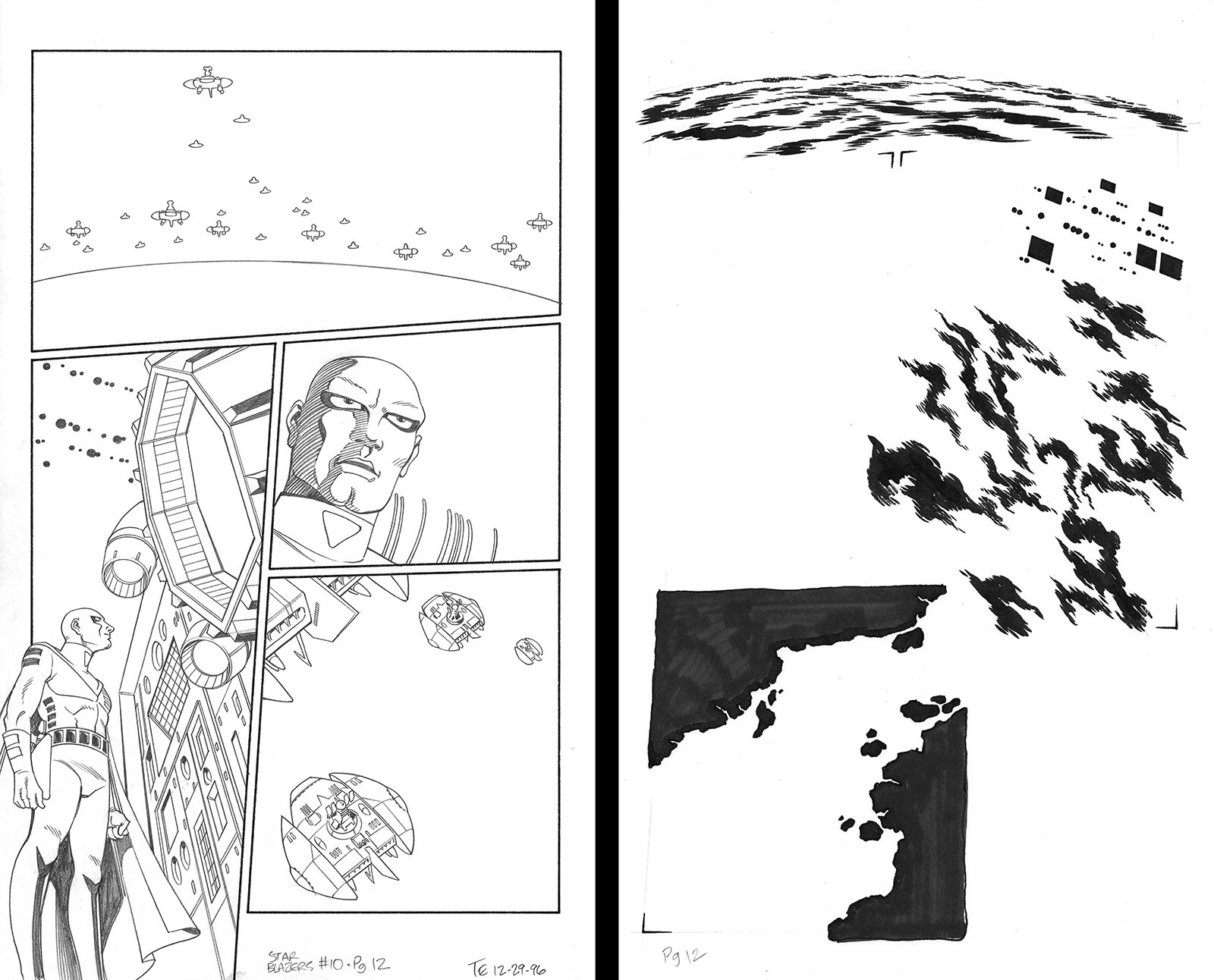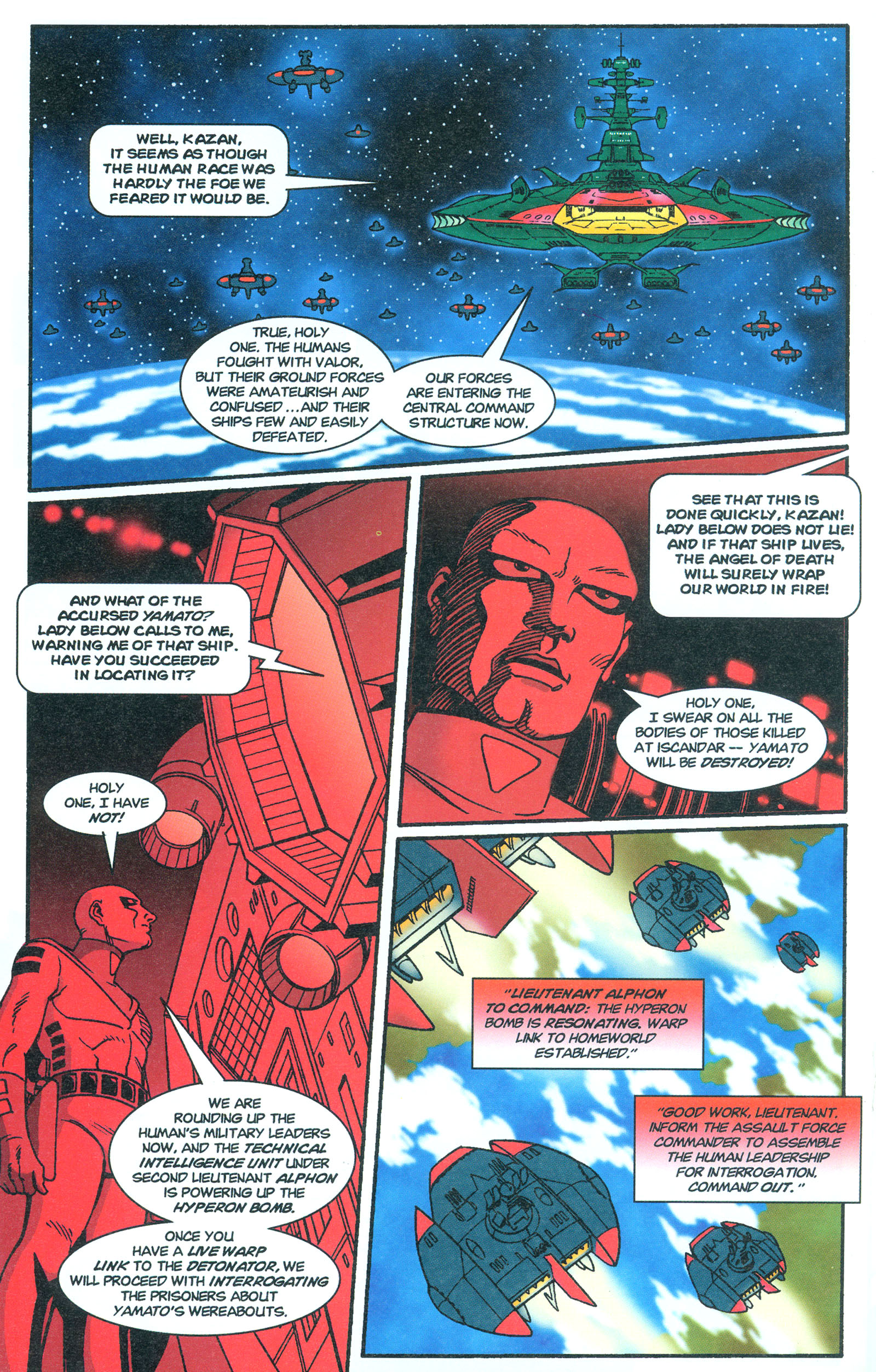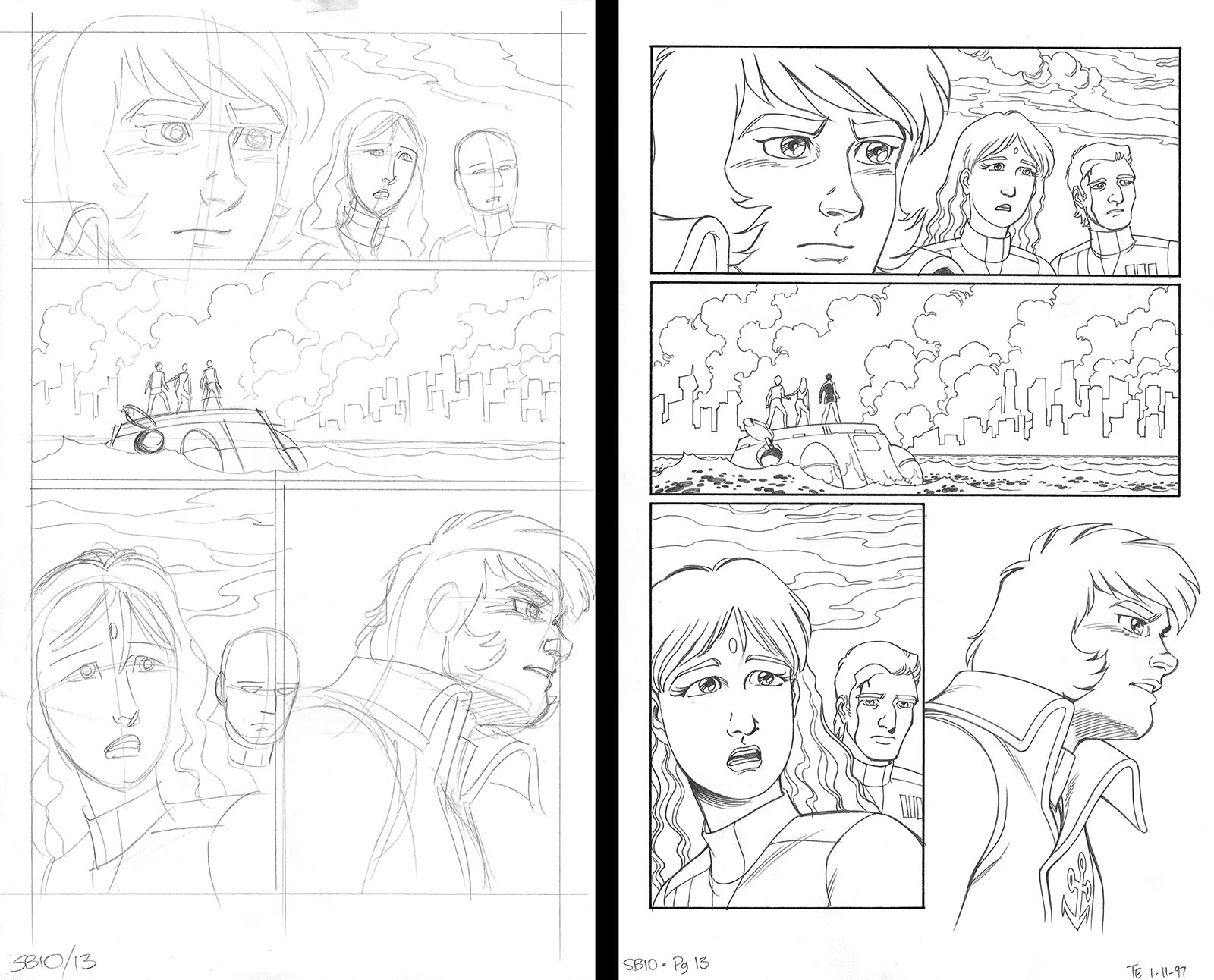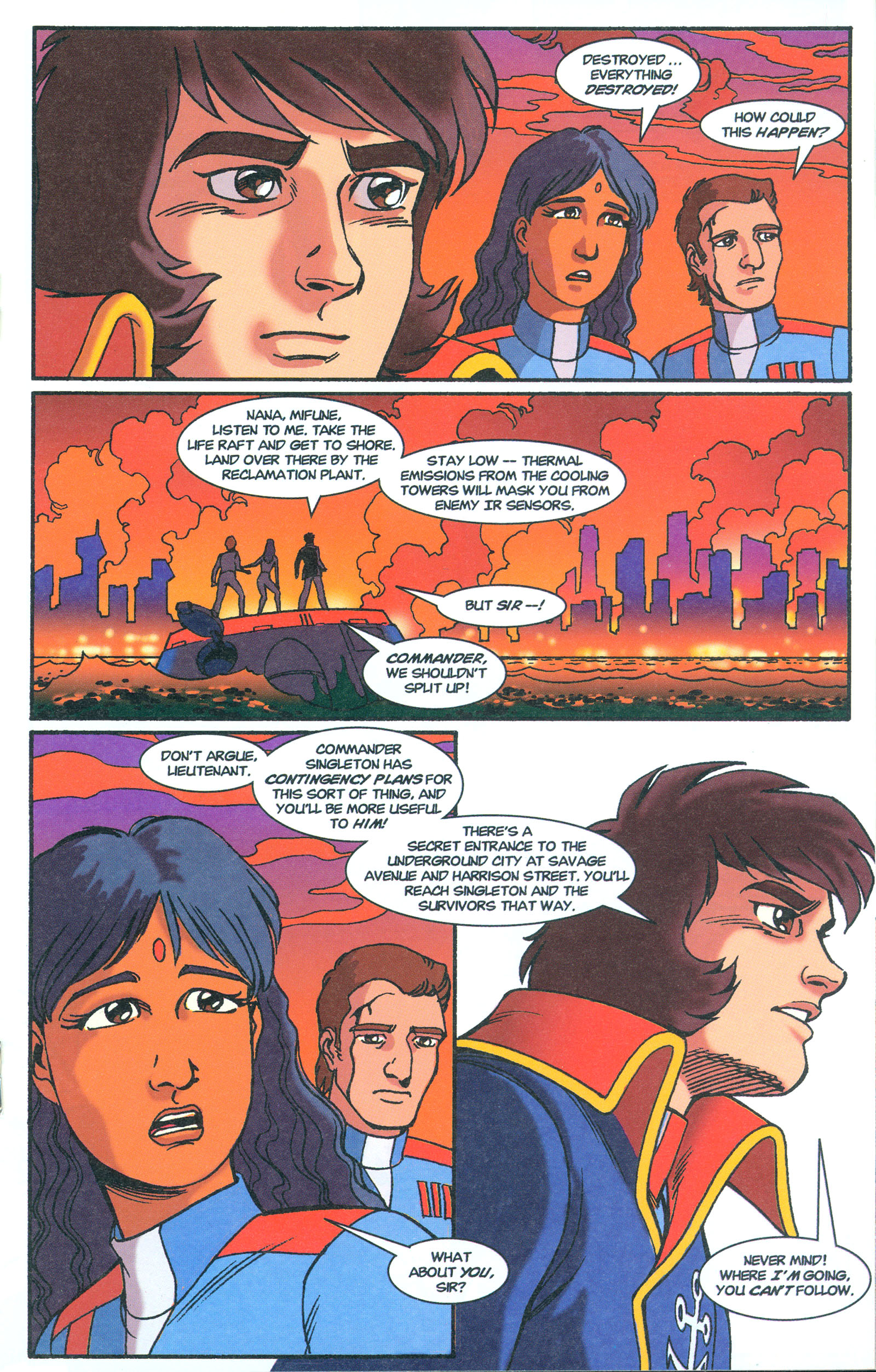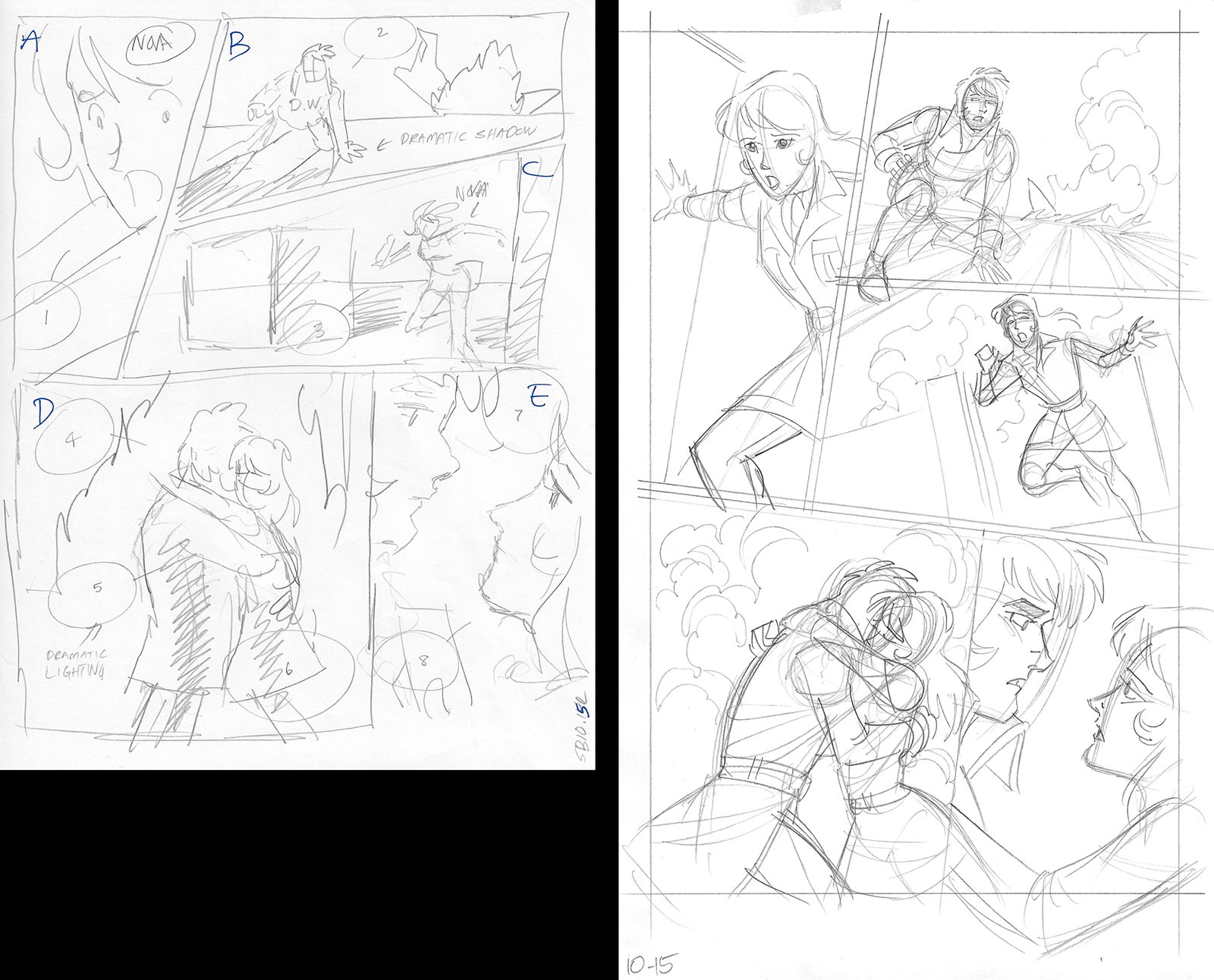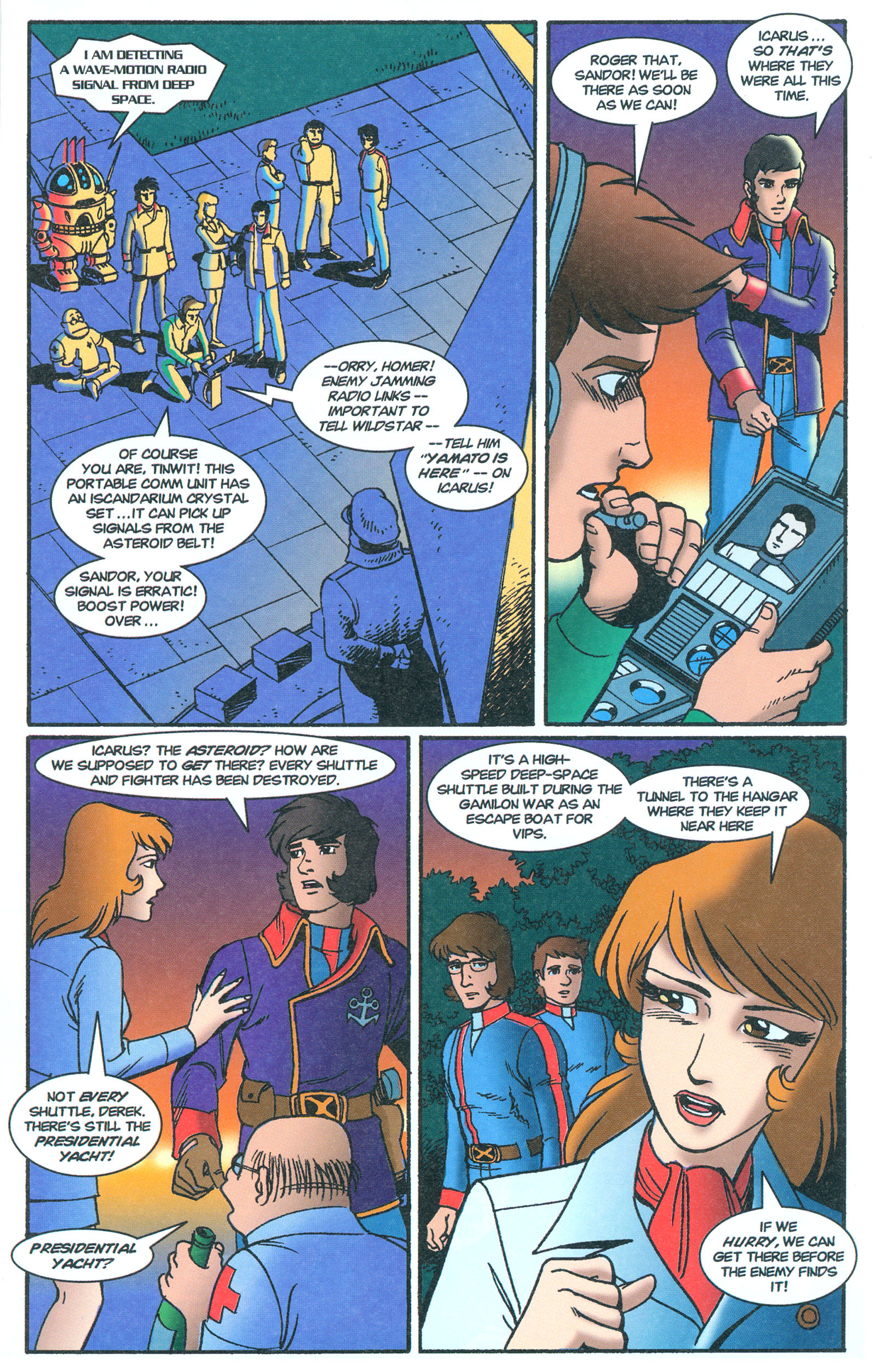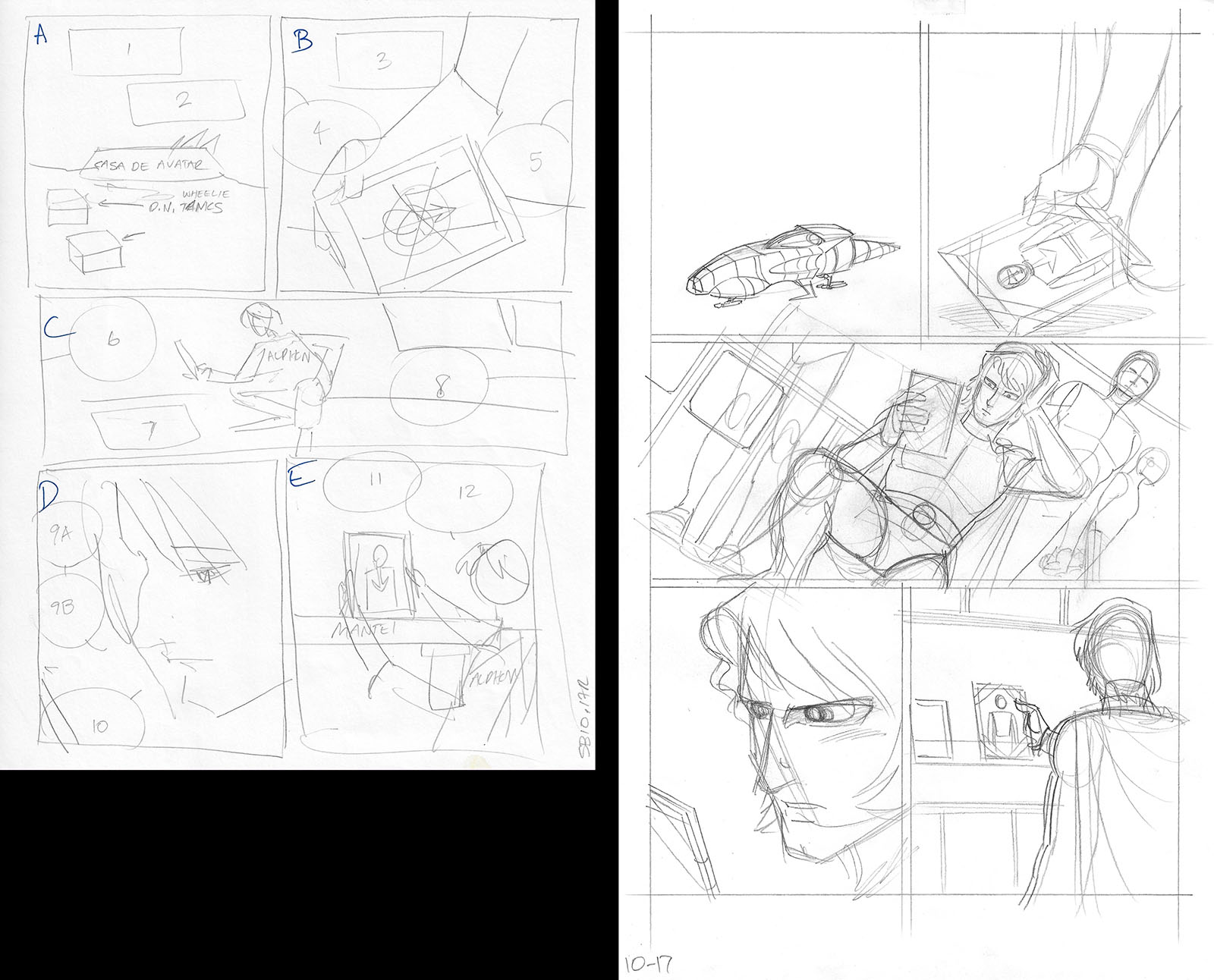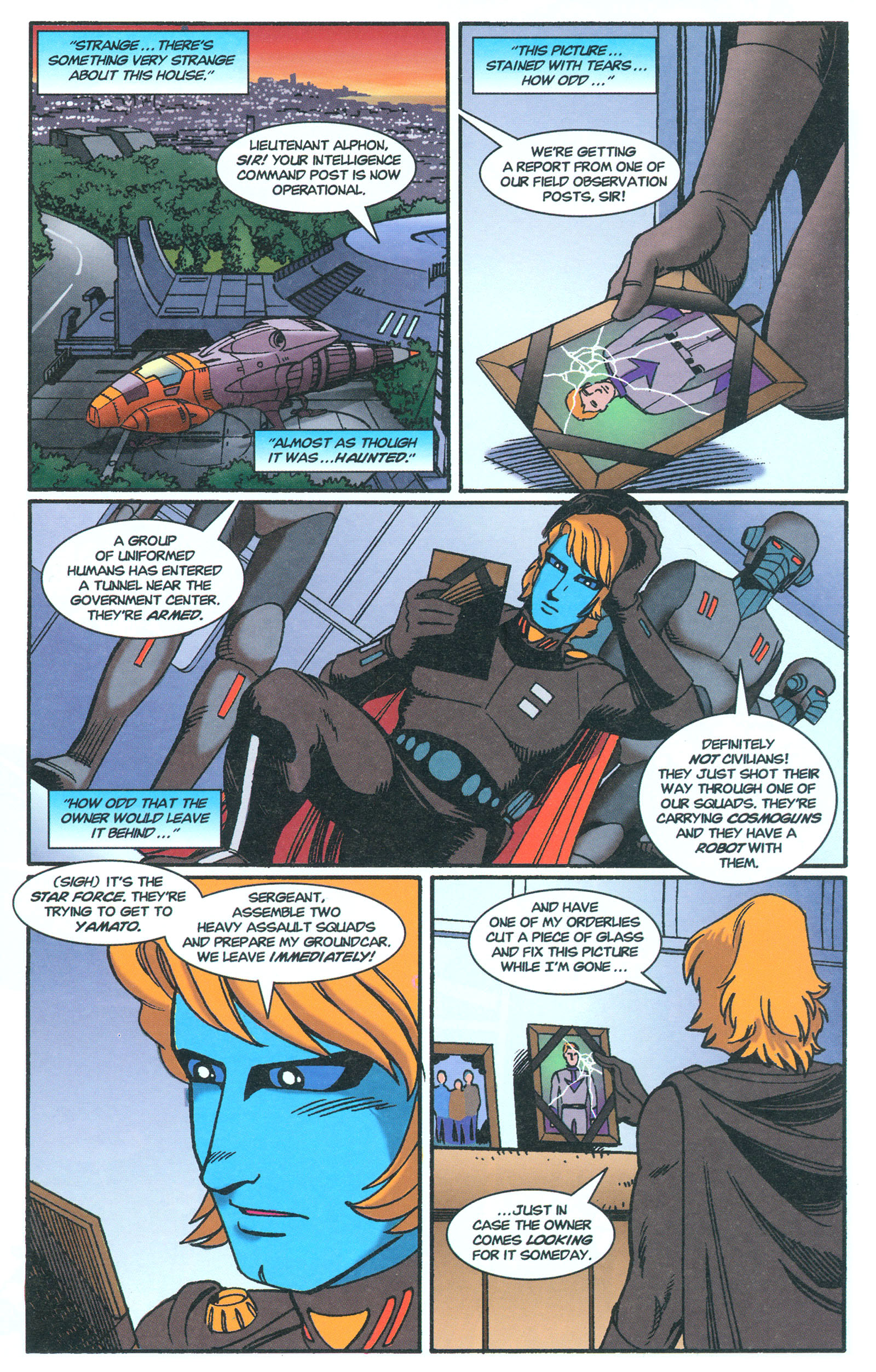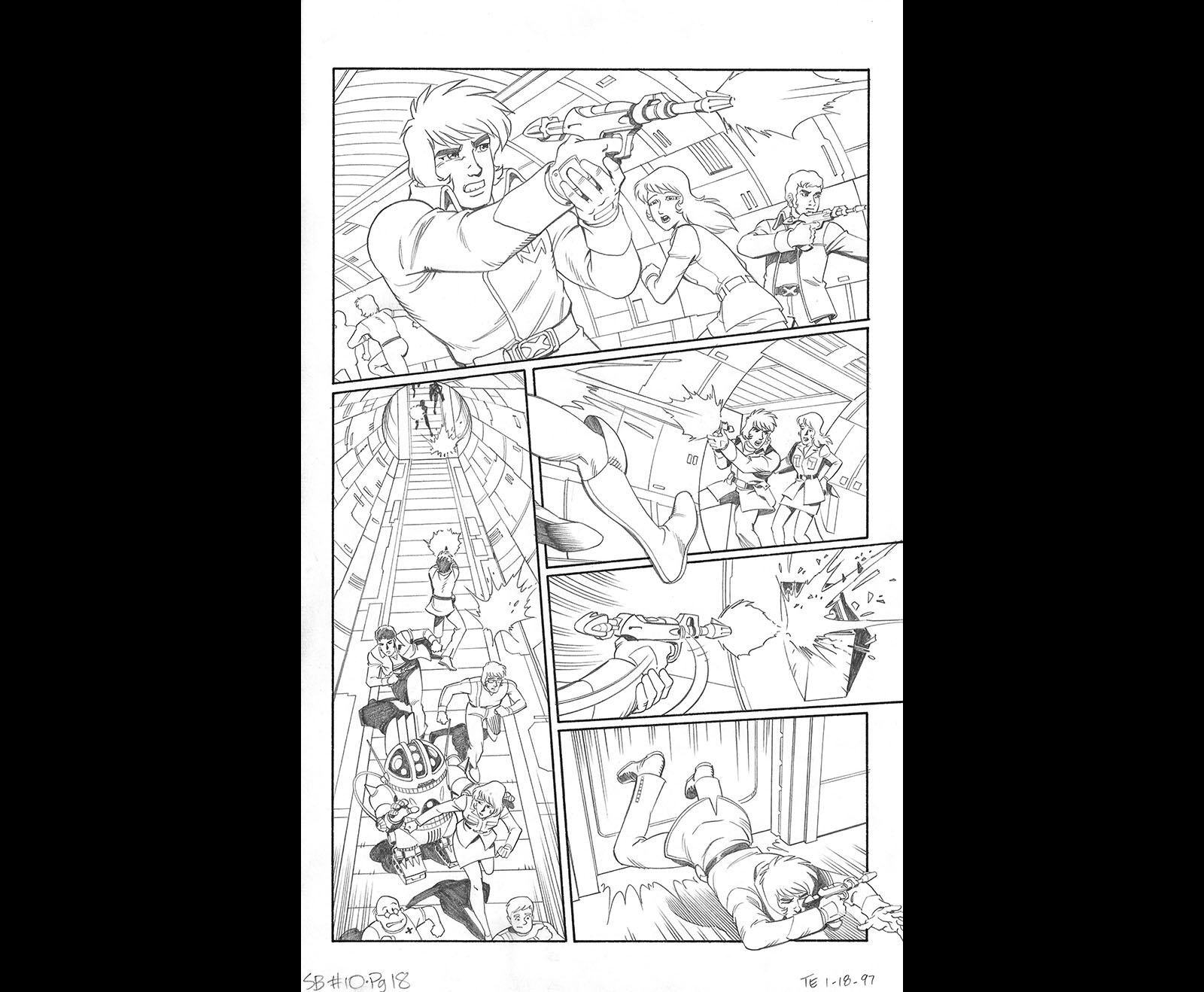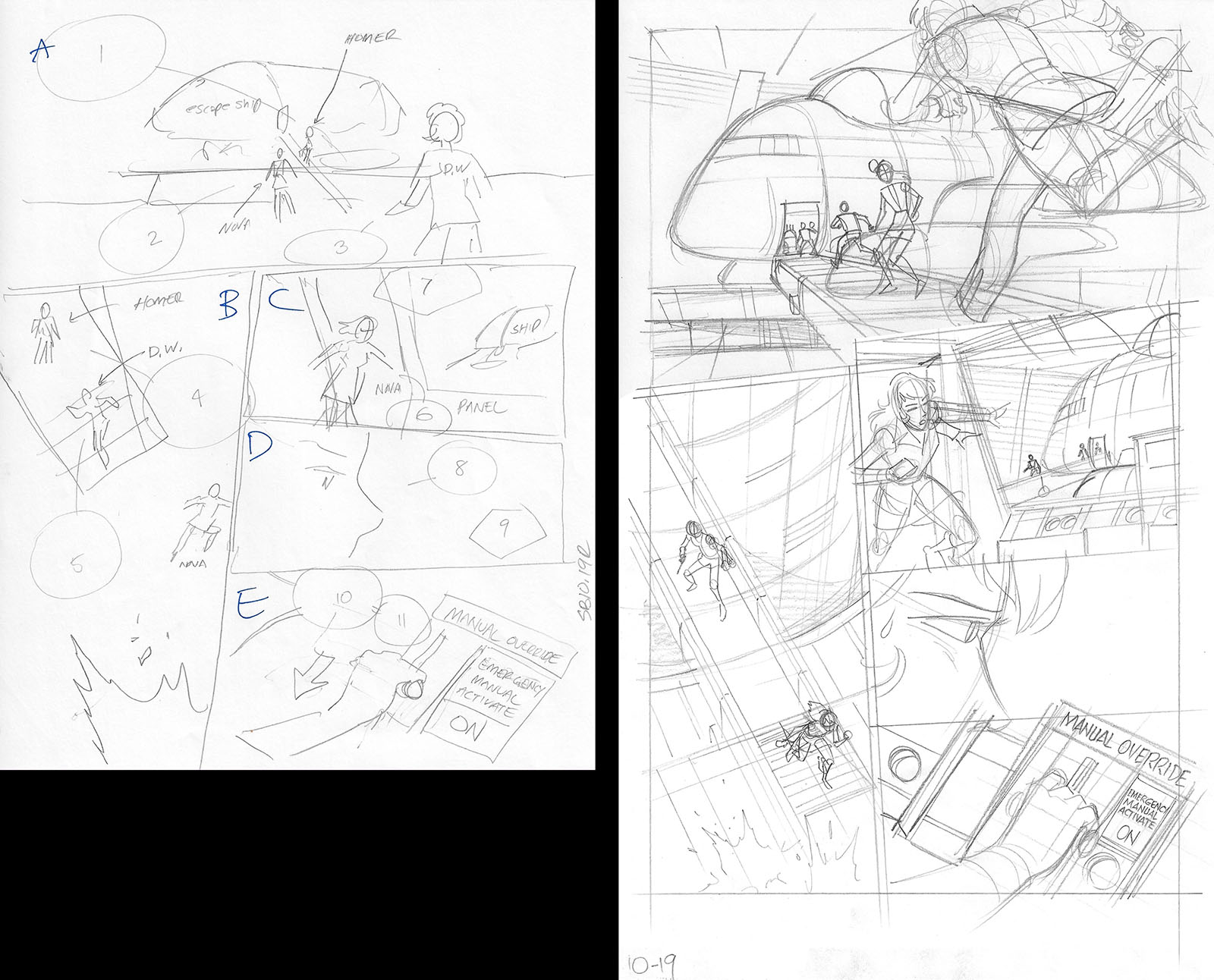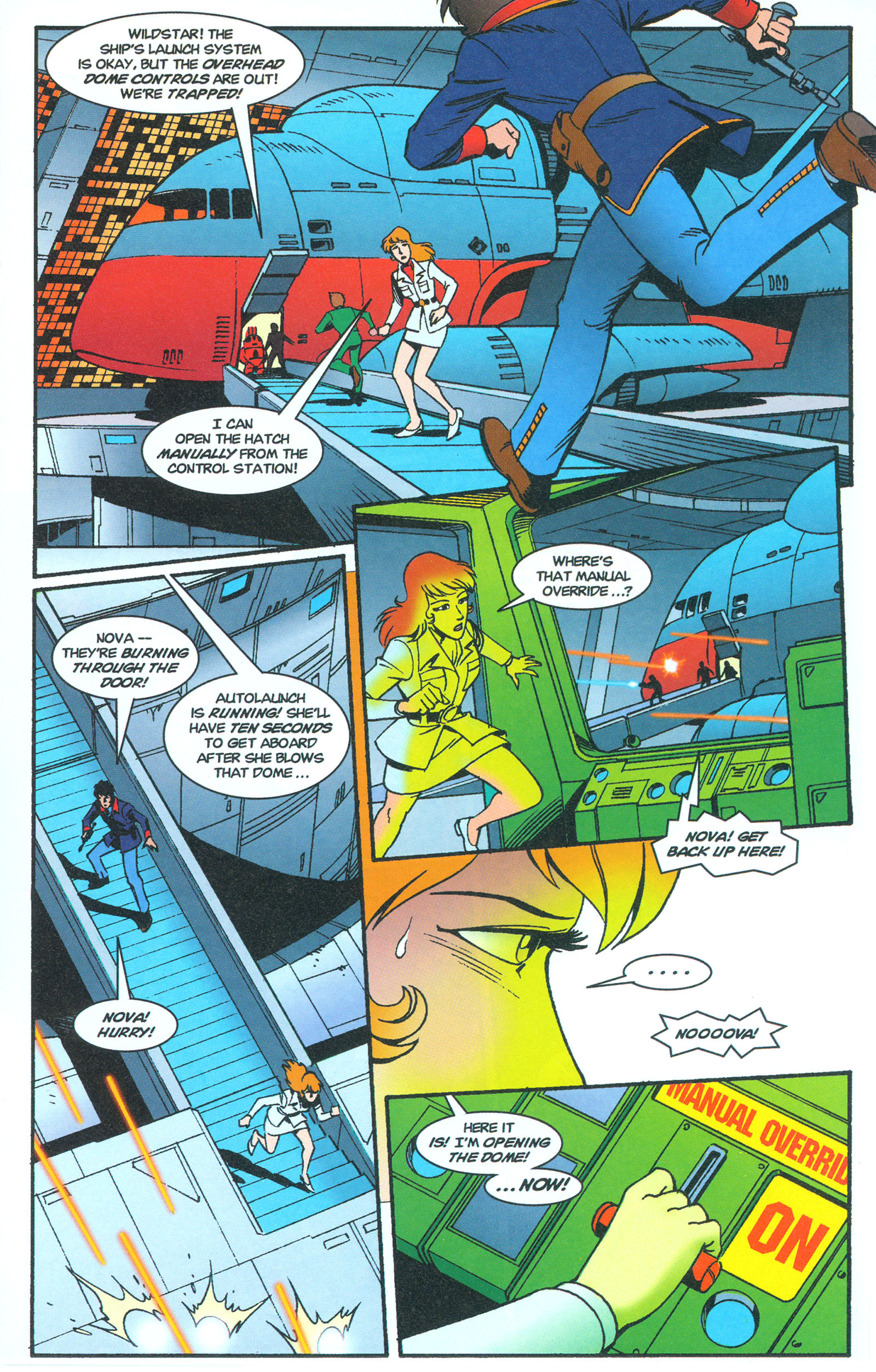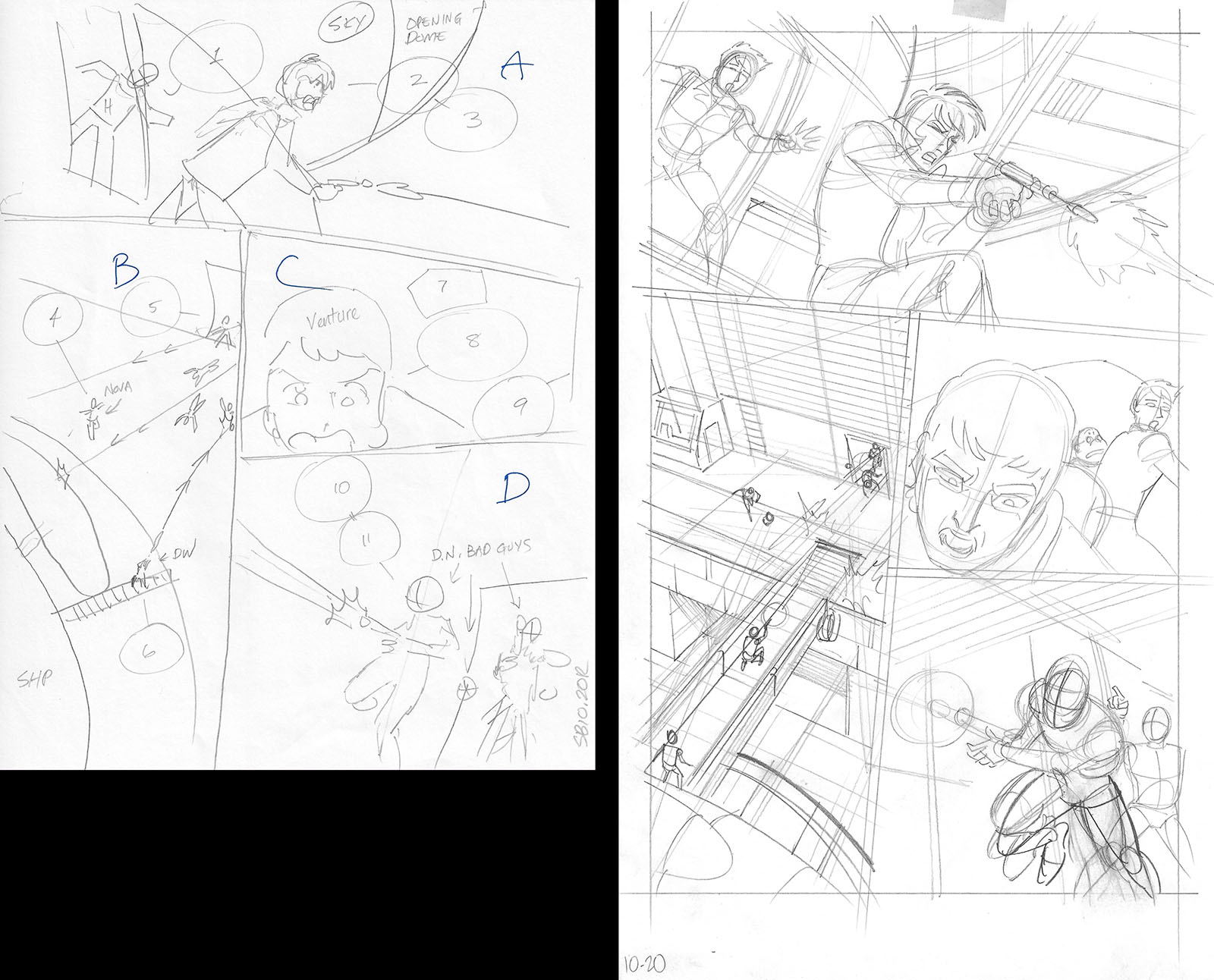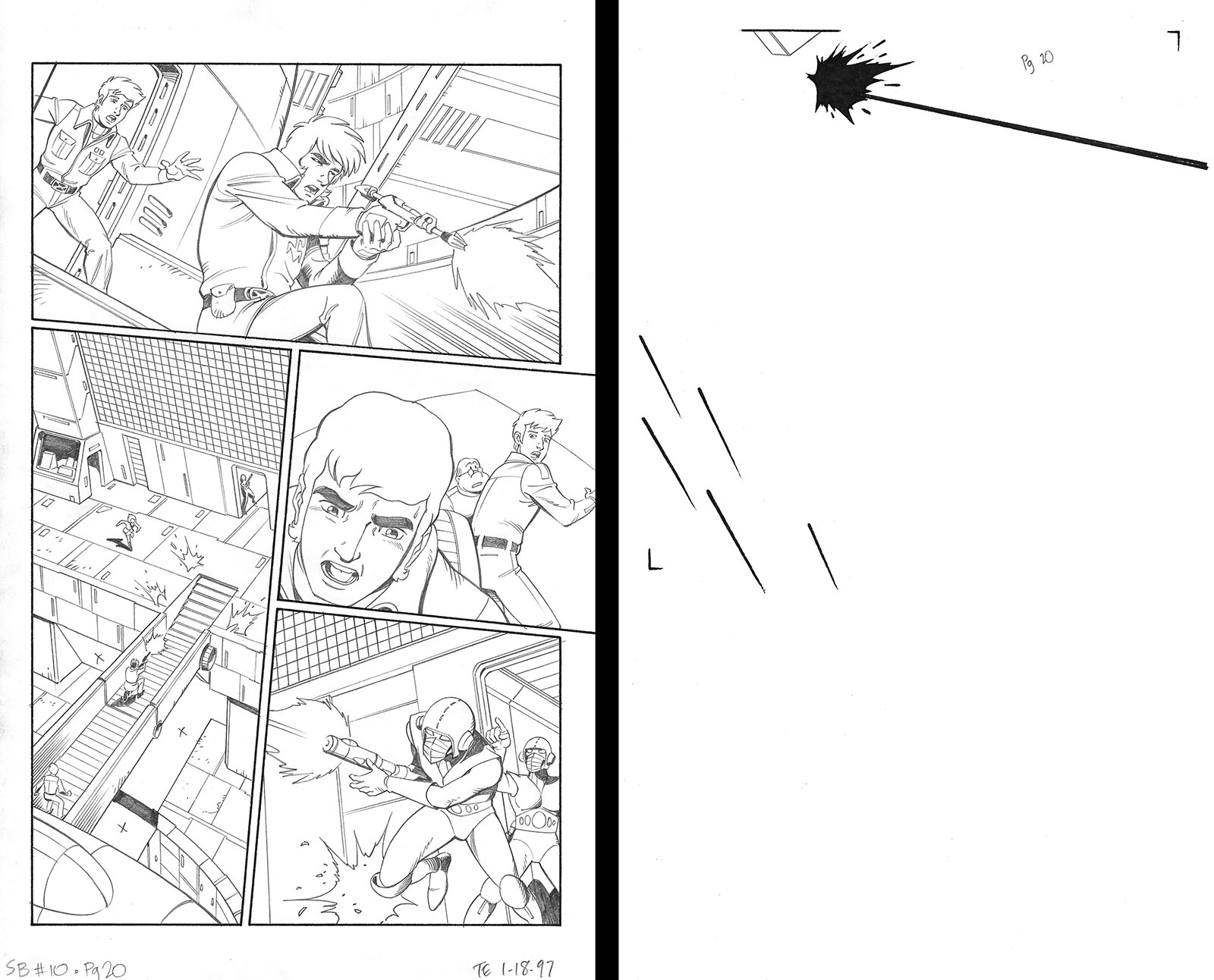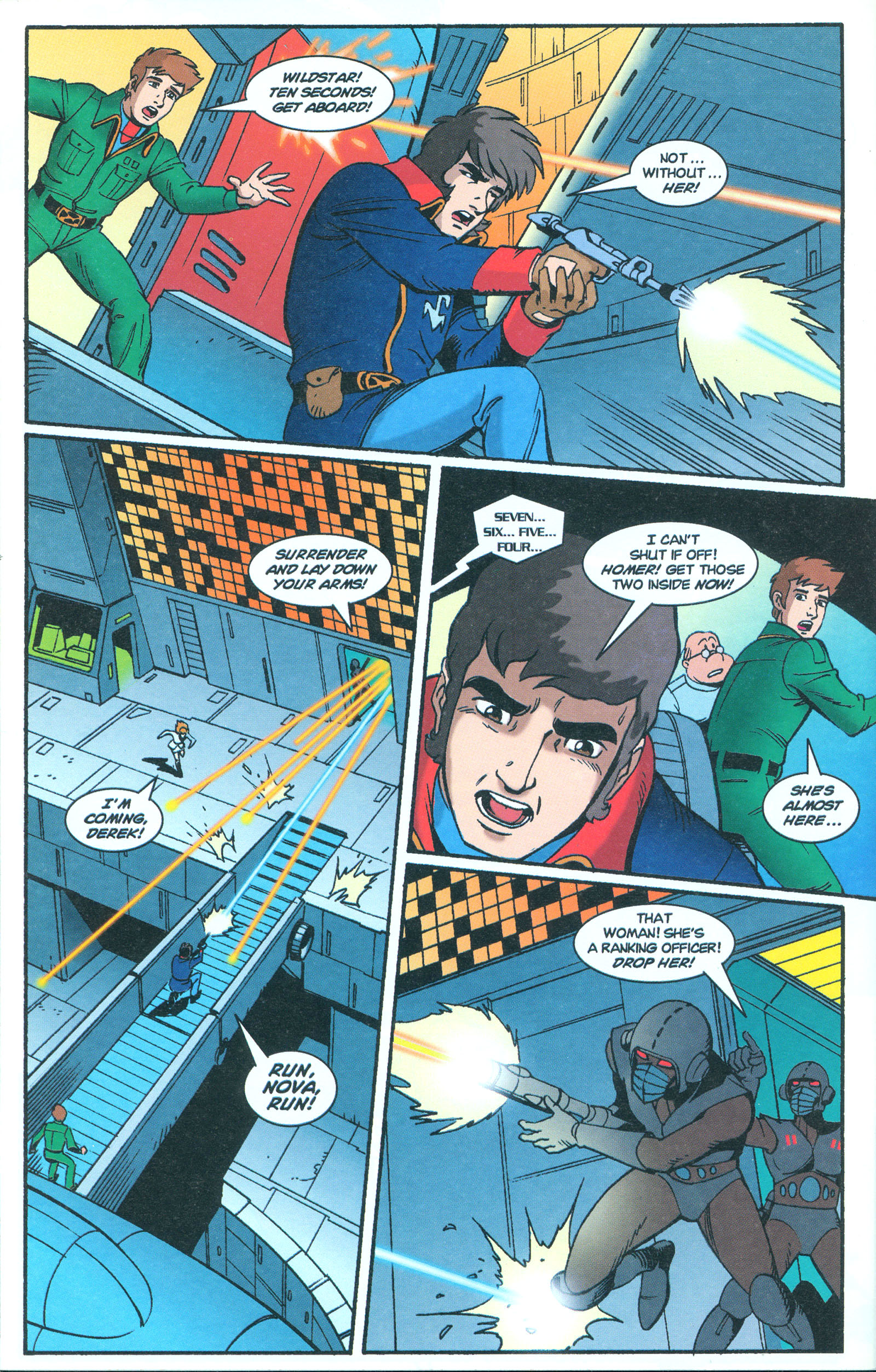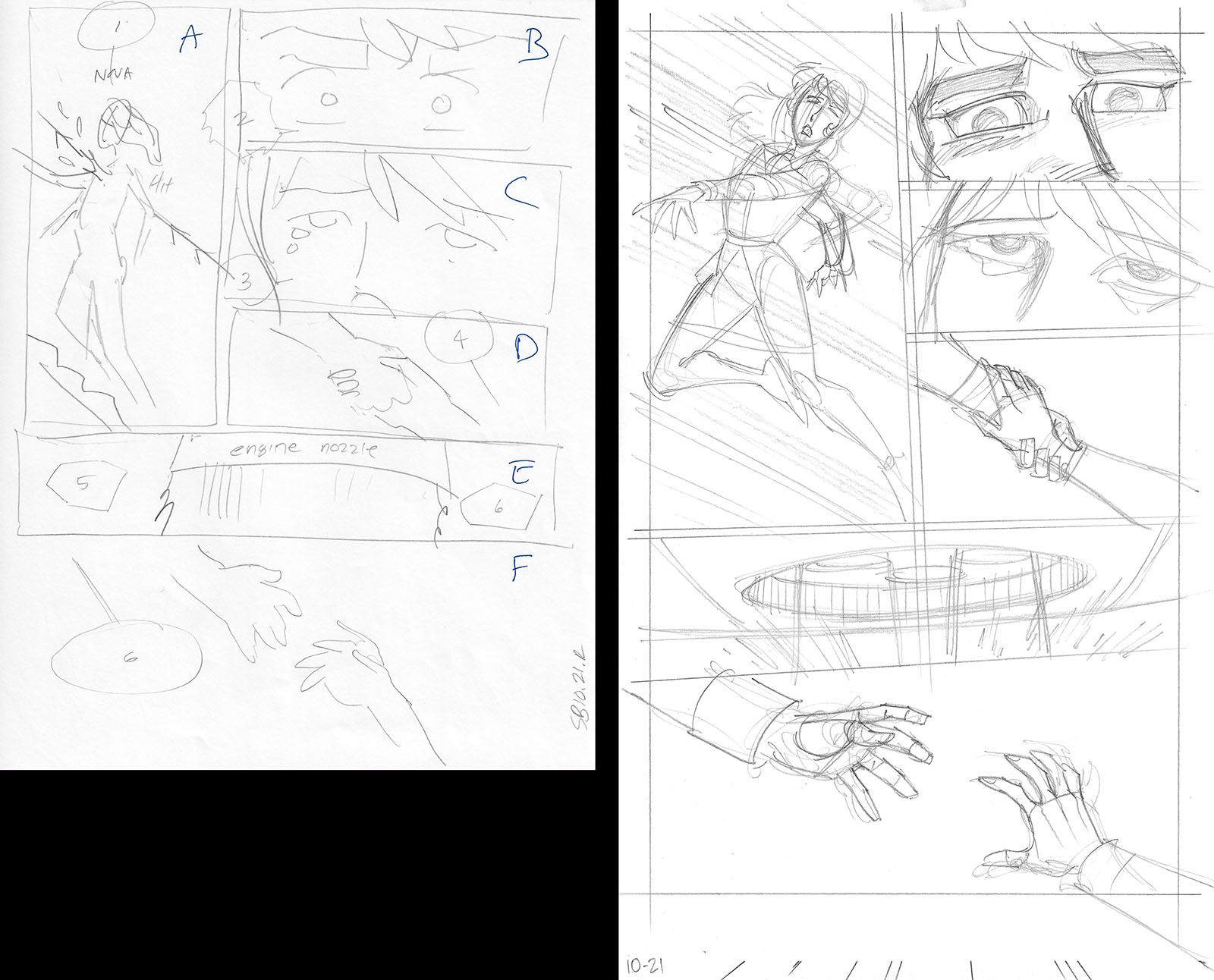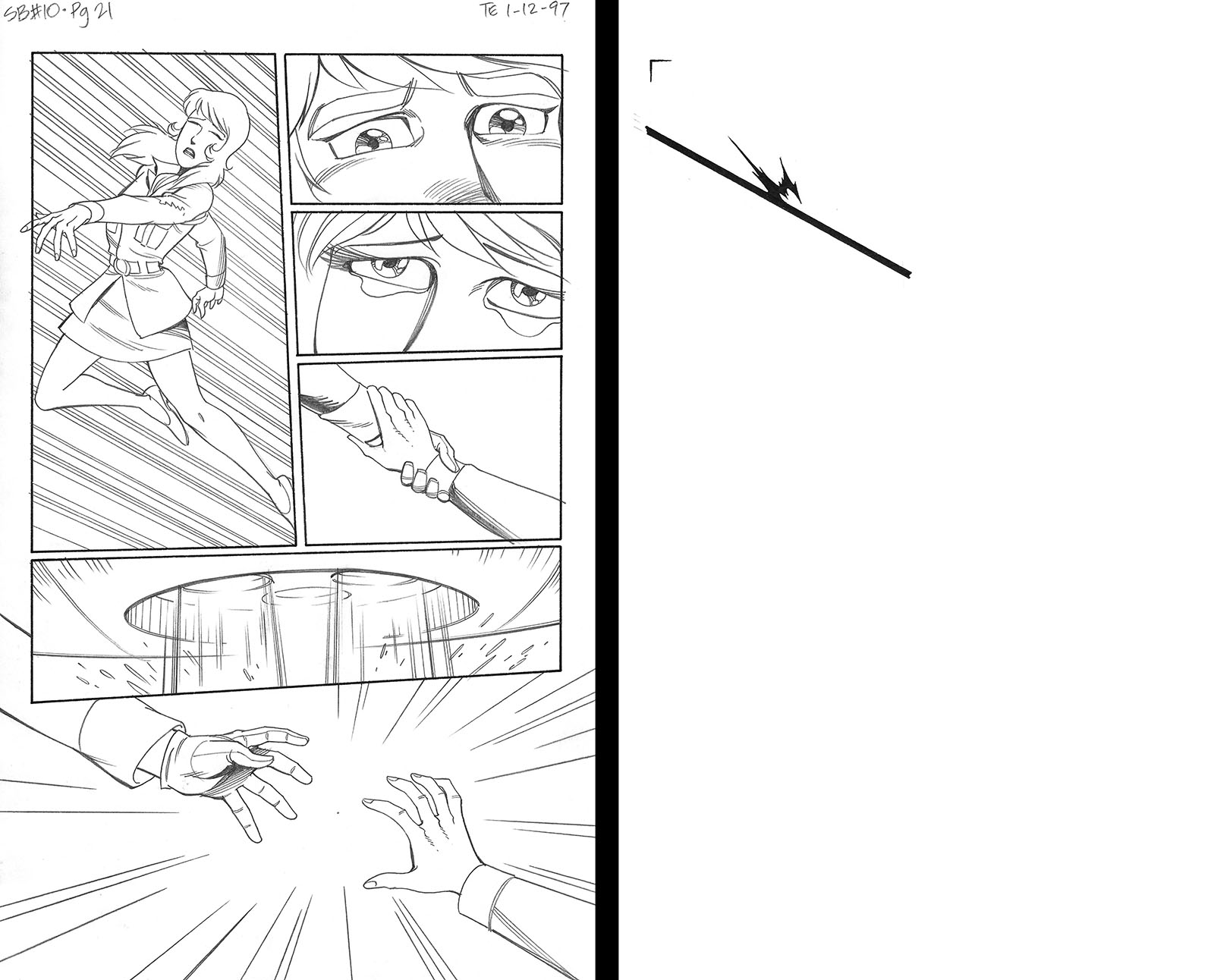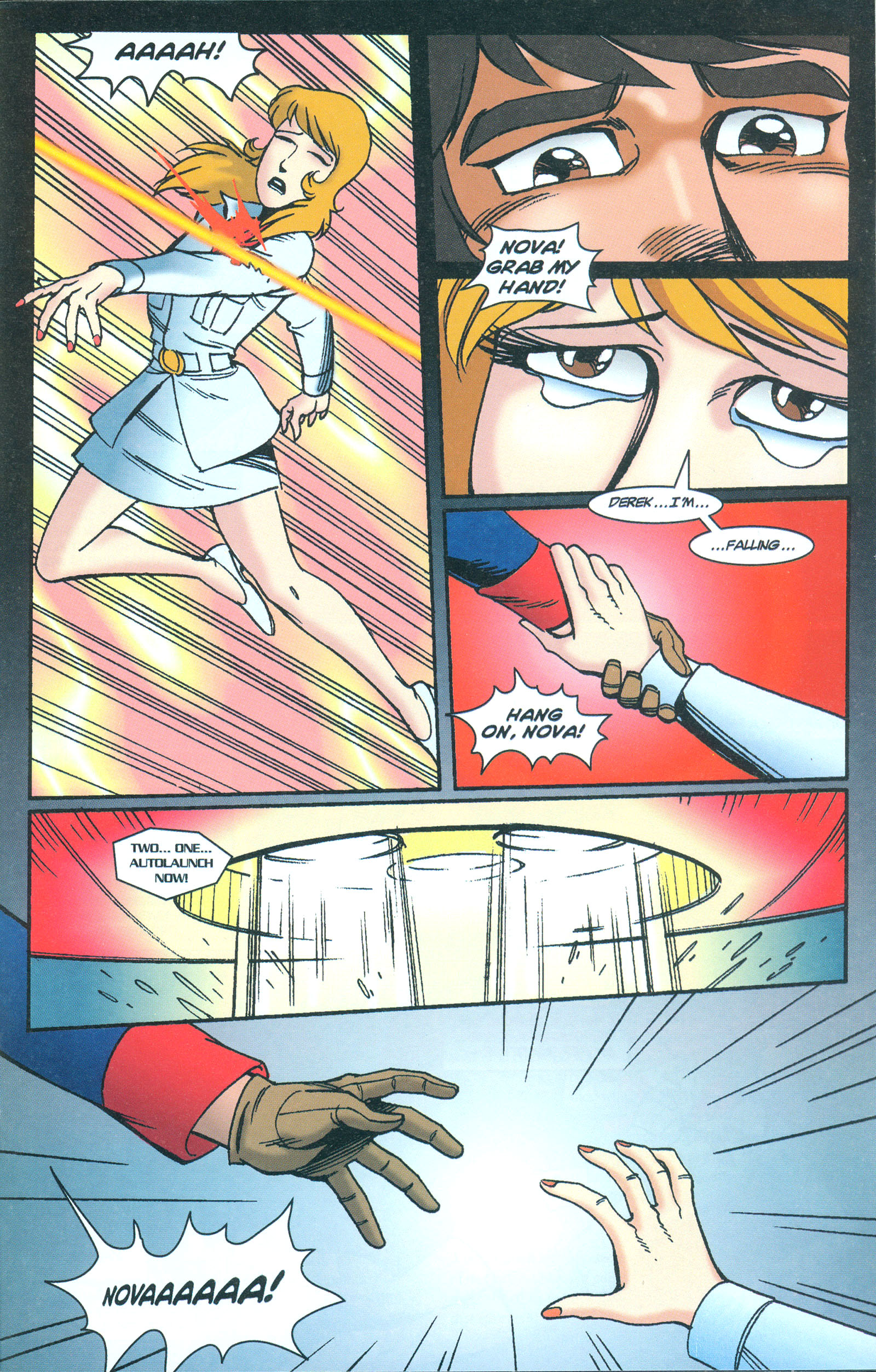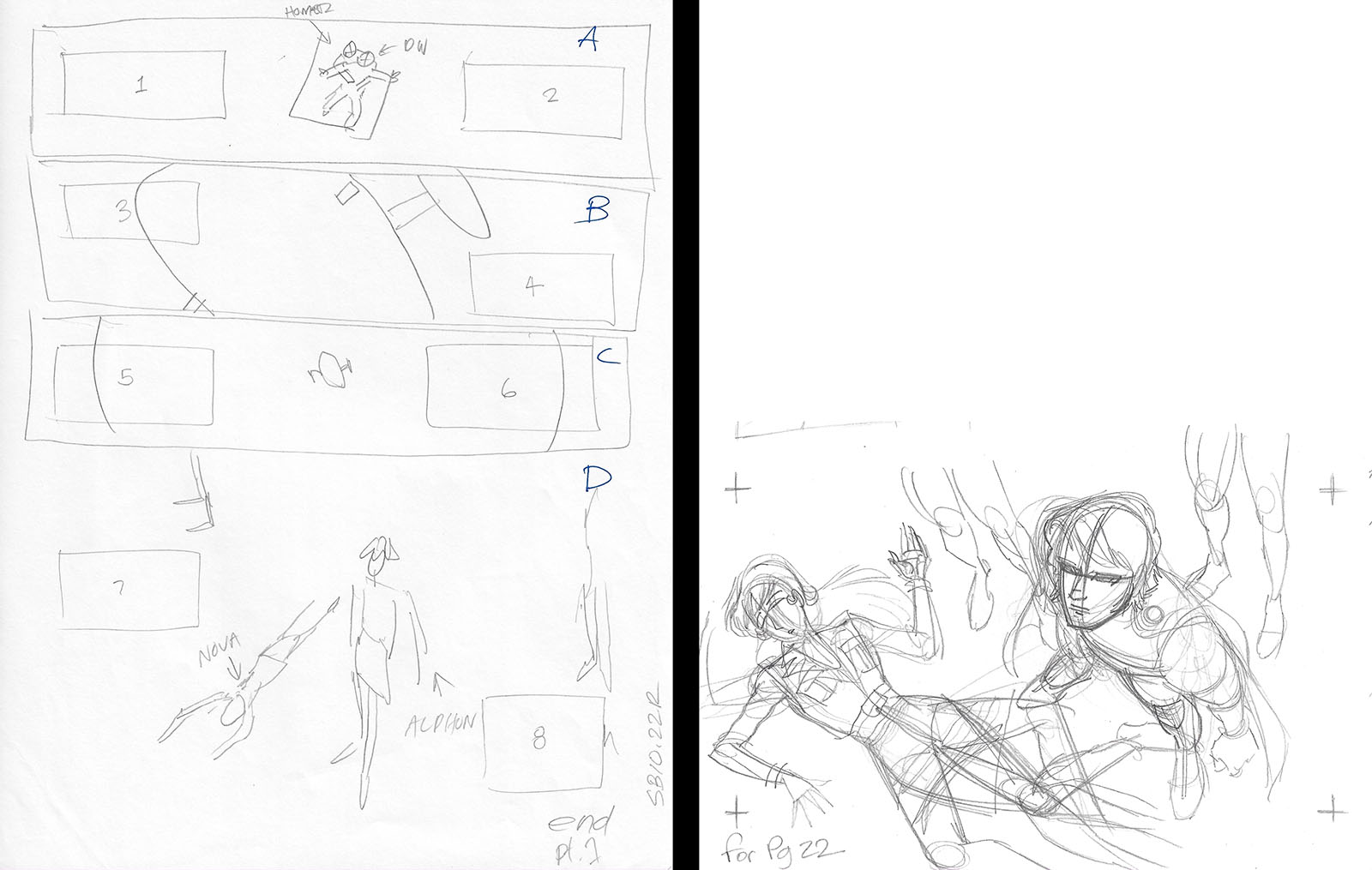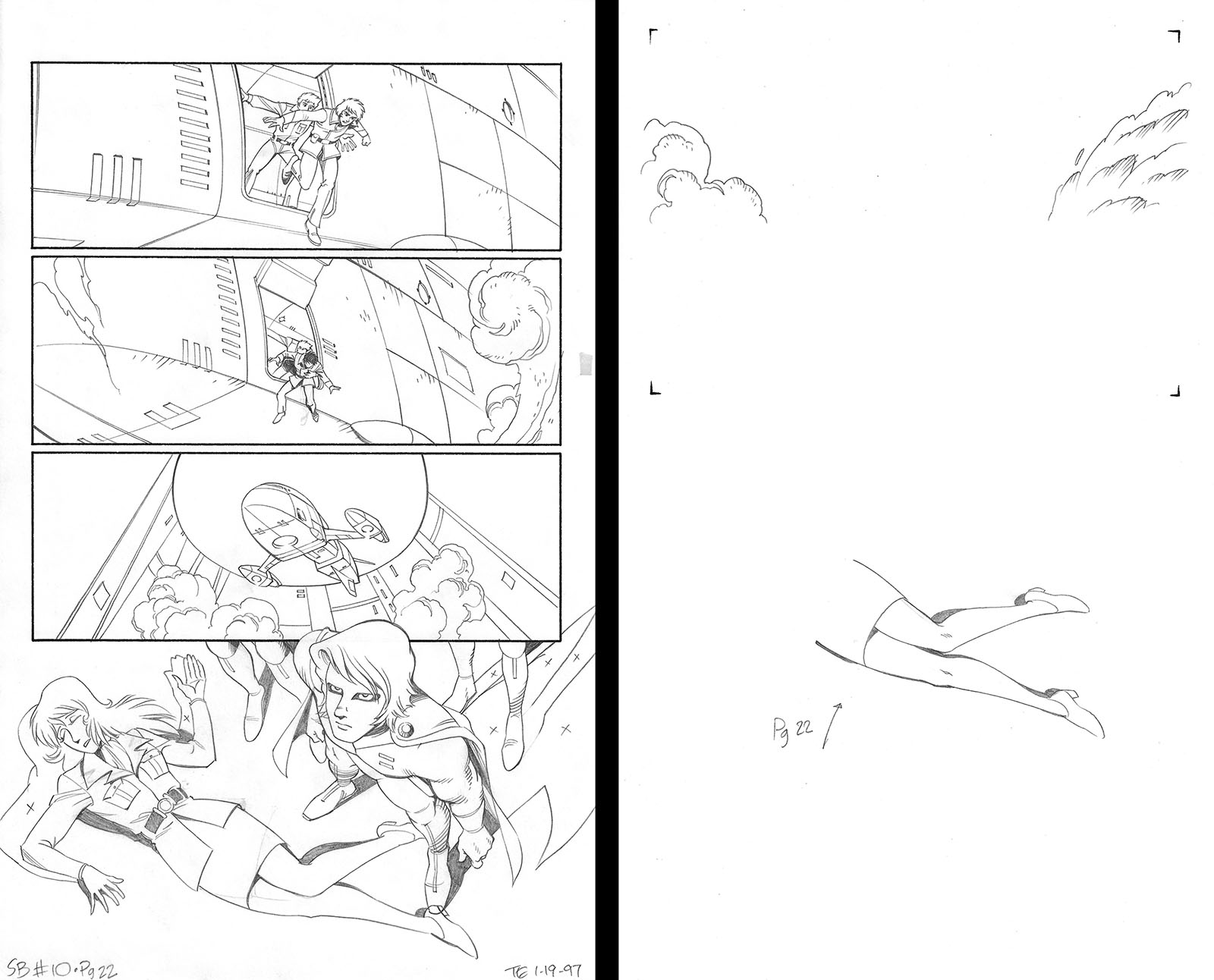Star Blazers #10, 1997
As 1996 drew to a close, a whole new future was opening up to me. In early December (four years to the day after I moved from Michigan to California), I walked into Sony Animation Studio to join the crew of Extreme Ghostbusters as a storyboard artist. From there, my full-time career in TV animation began.
But my love for making comic books hadn’t dimmed one bit, and Star Blazers was still my top priority when I wasn’t busting ghosts. The production of this issue crossed the border from December ’96 to January ’97, marking the first time I was making comics and cartoons simultaneously. It was Star Blazers, after all, that made me want to make cartoons, so it was only fitting for it to be there with me when I finally took the plunge.
This was the first issue to adapt the 1980 feature film Be Forever Yamato, which we estimated would take six issues. The comic was bi-monthly, so that would set us up at Studio Go! for a year of work. Other things got in the way of that plan, but we’ll save that for next time.
Be Forever was a dense, packed story that put a lot of demands on its audience. This was especially true of the first 27 minutes of screen time, which was the segment we committed to paper in this issue. Bruce Lewis took point to determine how the scenes would be broken down page by page. As with issue 9, I expanded his roughs into full size pages that captured the action.
During this process, I worked with all the reference material within reach. Fortunately, a lot of books on the film had been published in Japan, filled with stills and design art. I was less reliant on screen shots this time, since Bruce was planning to expand the story beyond what was seen in 1980. Therefore, we pretended that we were a separate film crew in the same environment, getting our own footage. (Which made it a very different experience from The New Voyage.)
When I finished all the art, the issue was turned over to John Ott for lettering, coloring, and prep for printing. That made it a true Studio Go! jam.
If you want to jump right to the finished product, click here for a cover-to-cover PDF.
If you’d like to see how all the pieces came together, presented below are the production materials for each page, from Bruce’s rough to the final version. Between them you’ll see my expanded layouts, my finished art, and the extra elements for special effects. Some things aren’t visible here because they were either reused from a previous issue (like the house, which appeared in issue 9) or scanned from a Japanese source (like an occasional background).
If you’ve ever wondered what it was like to create comics for the early days of Photoshop, this is your roadmap.
NEXT TIME: the making of issue #11
Also, if you’re interested in learning more (a LOT more) about Star Blazers and Space Battleship Yamato, click here and get lost in outer space.

